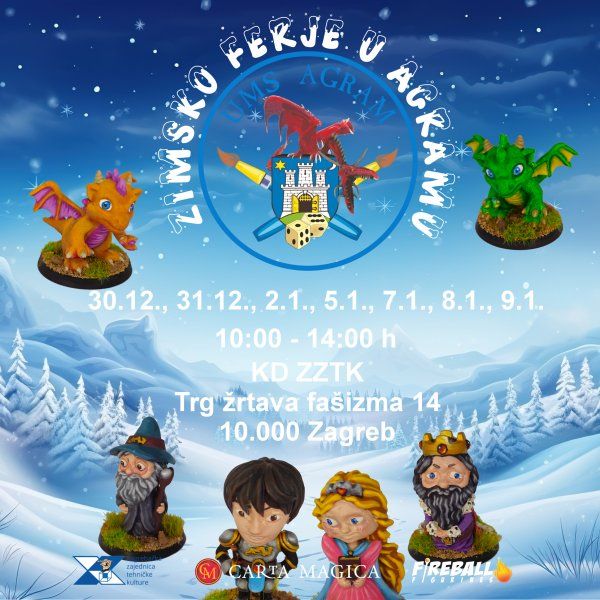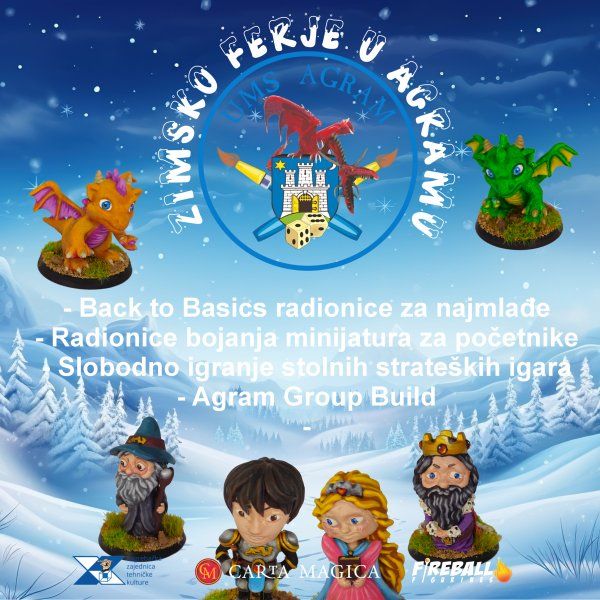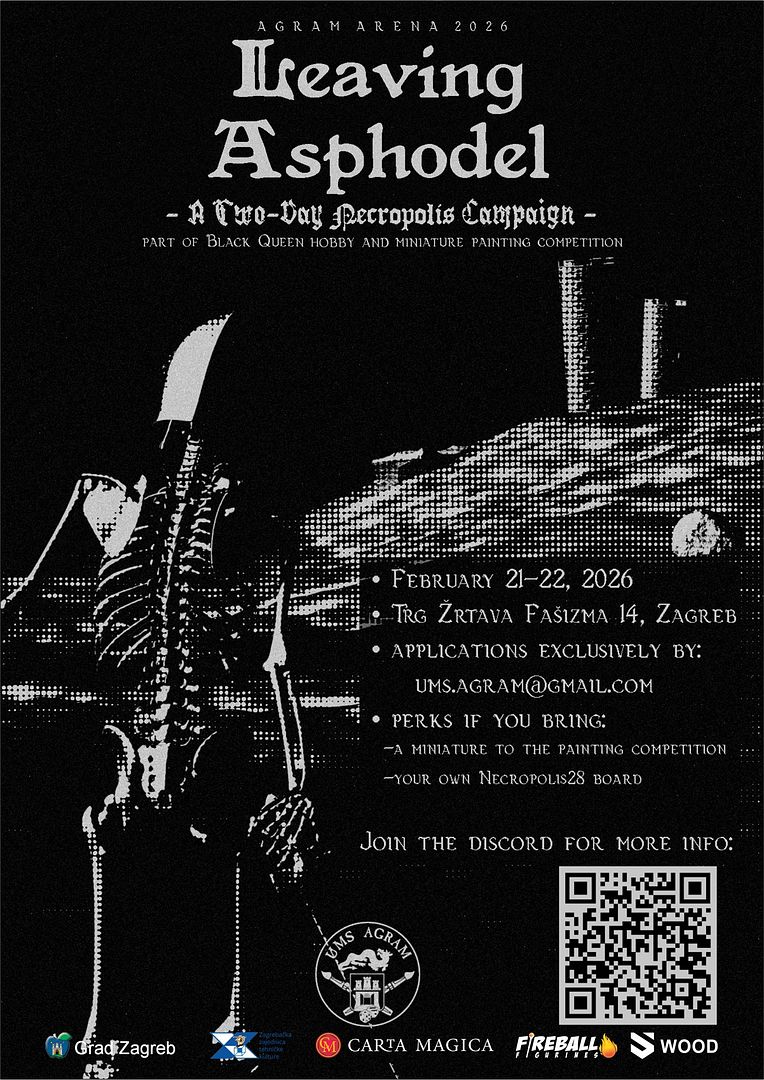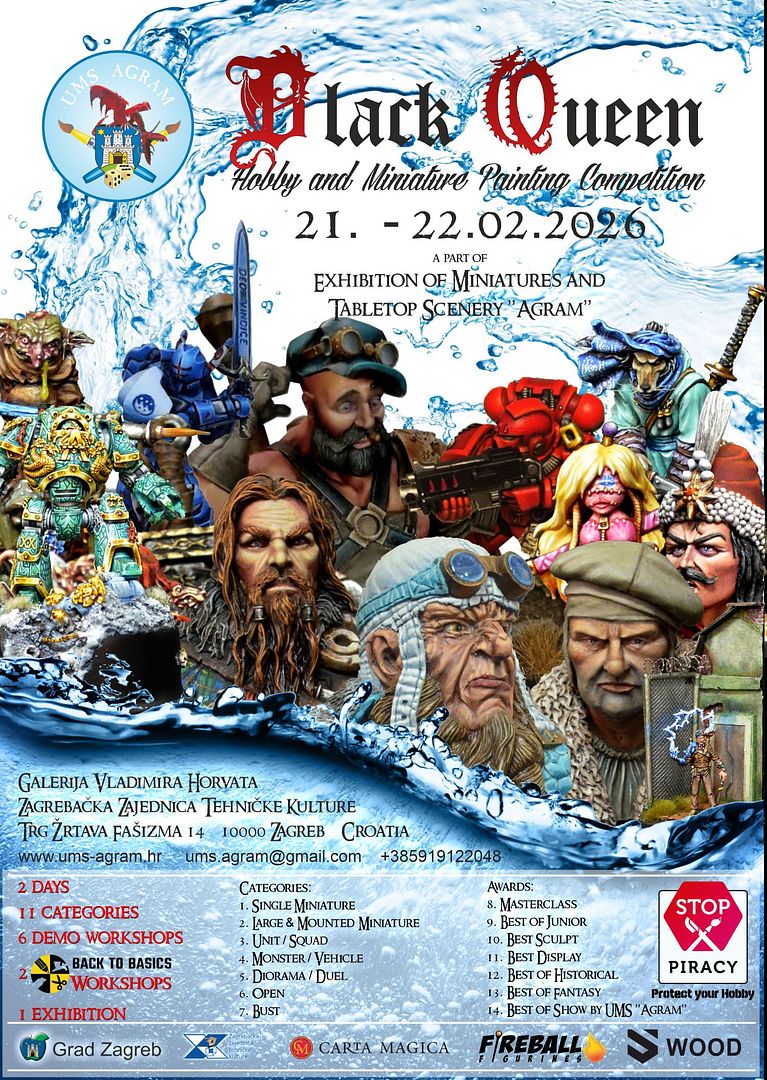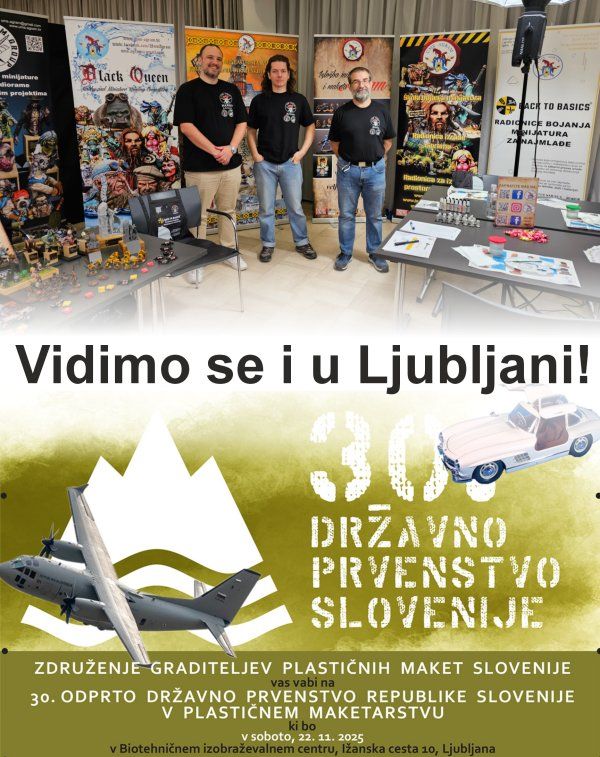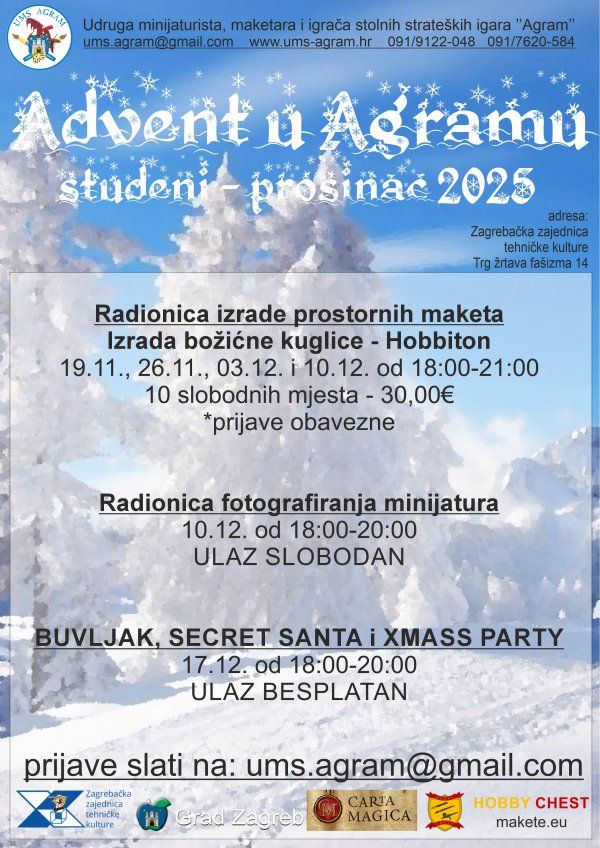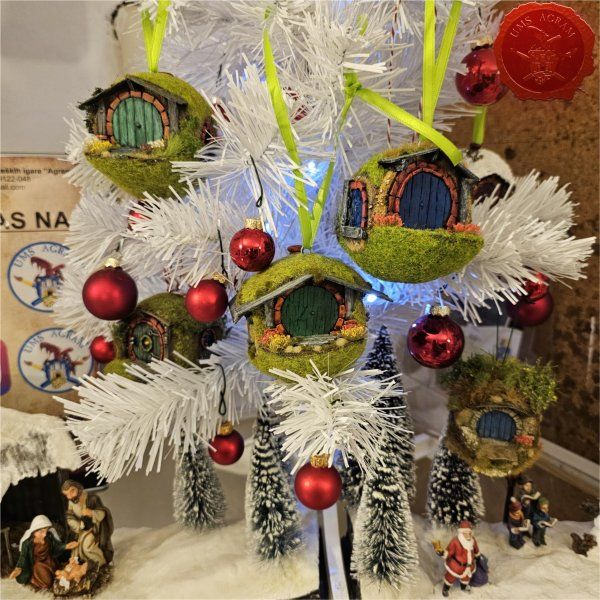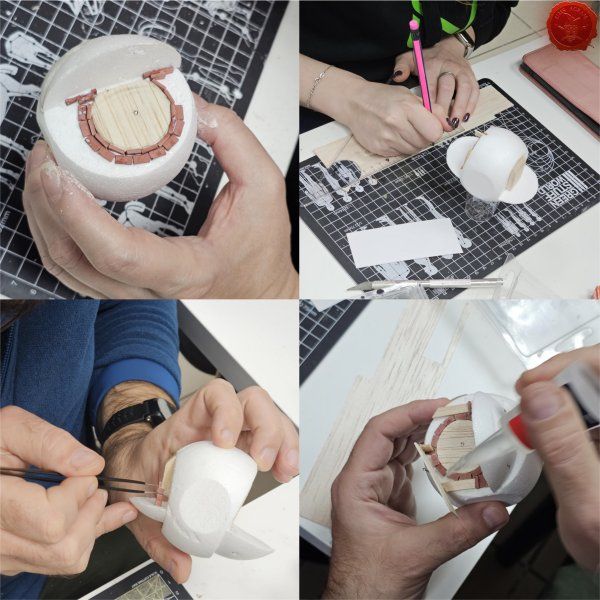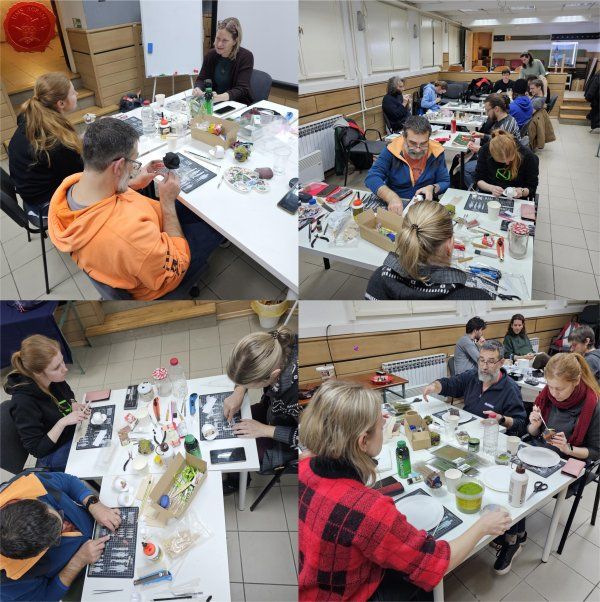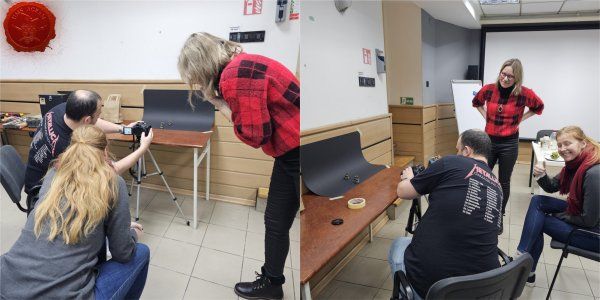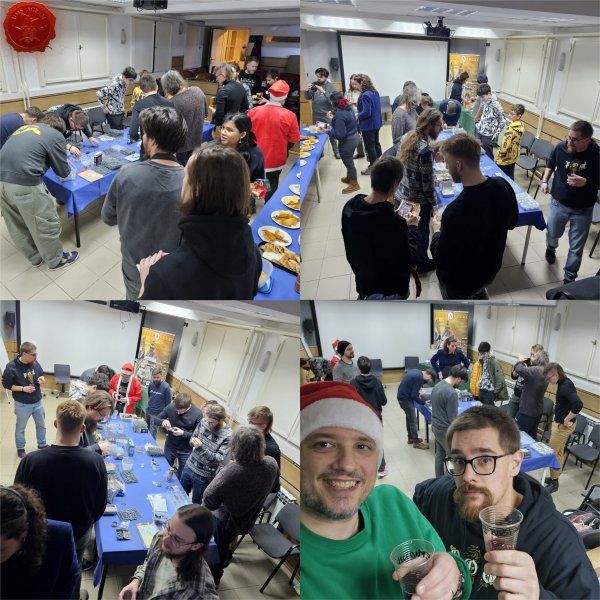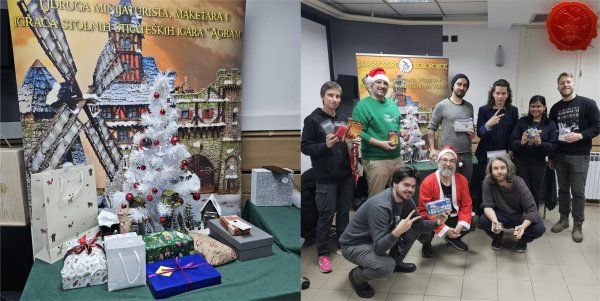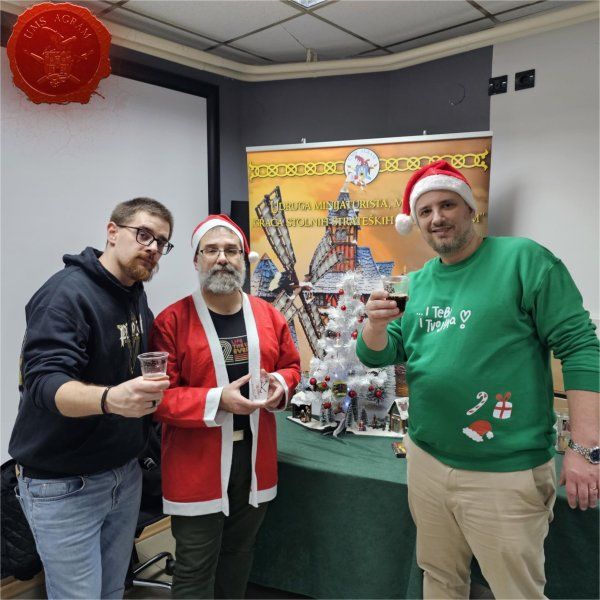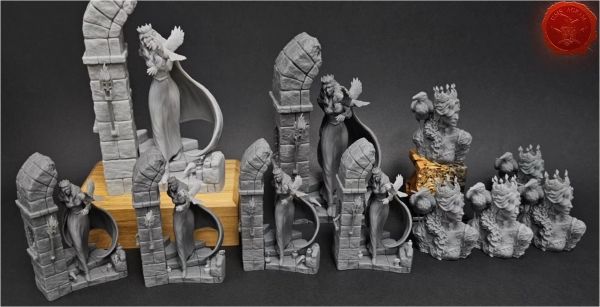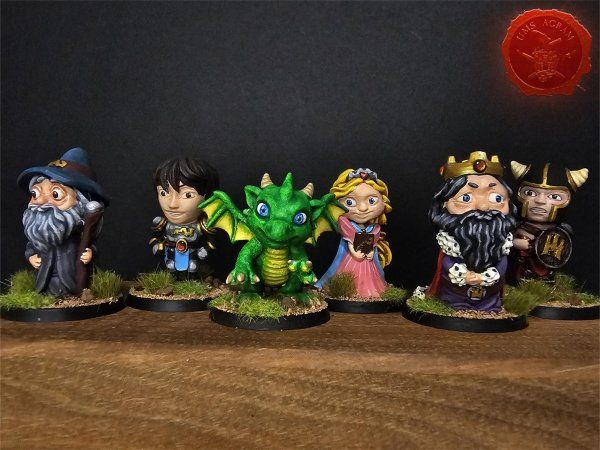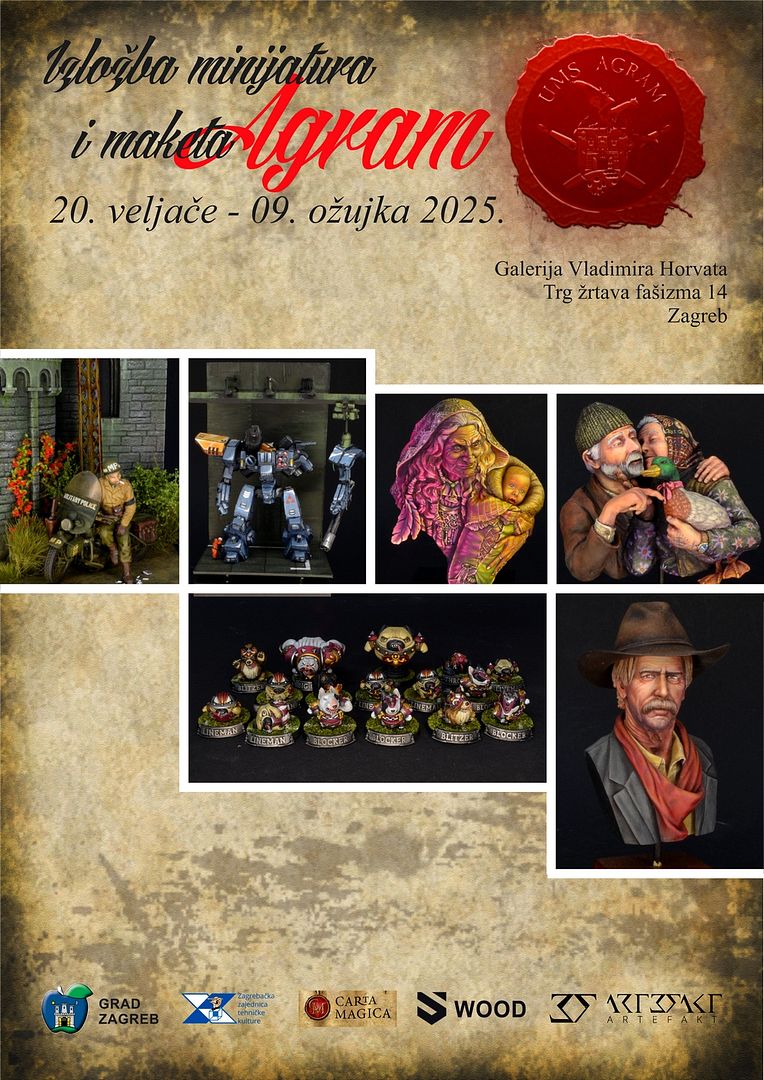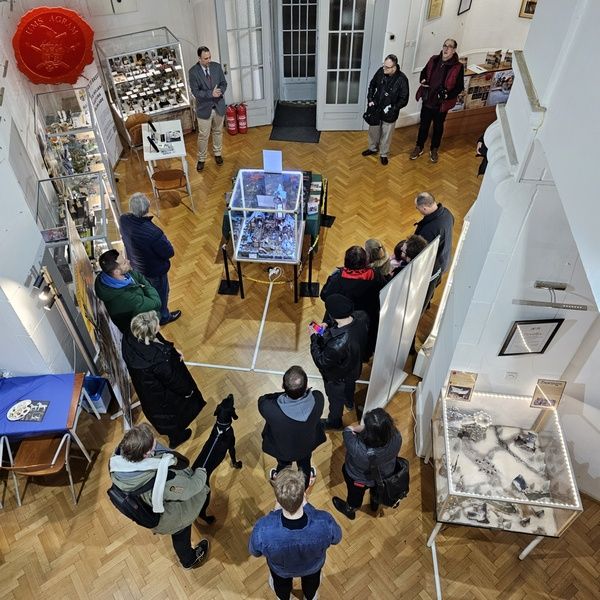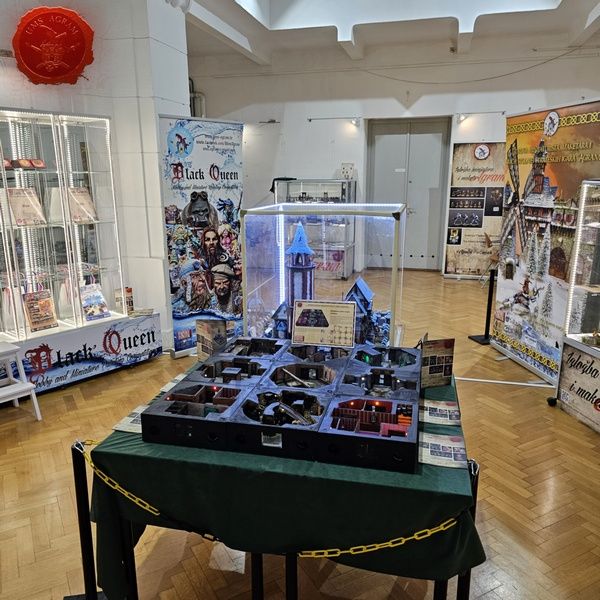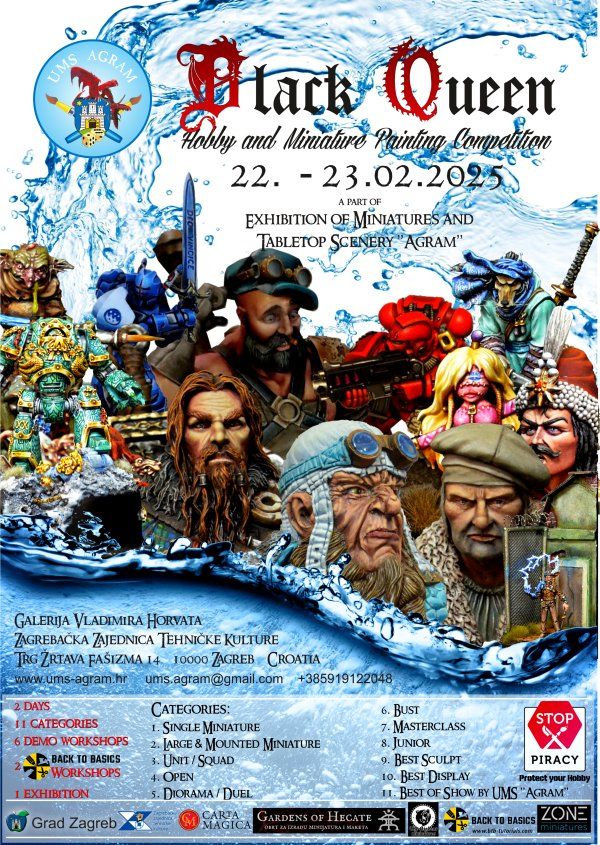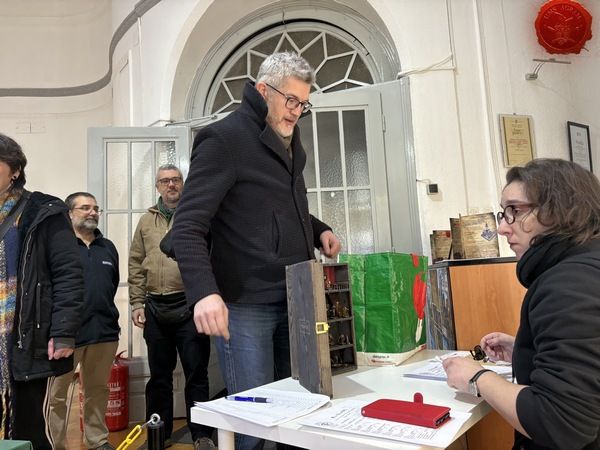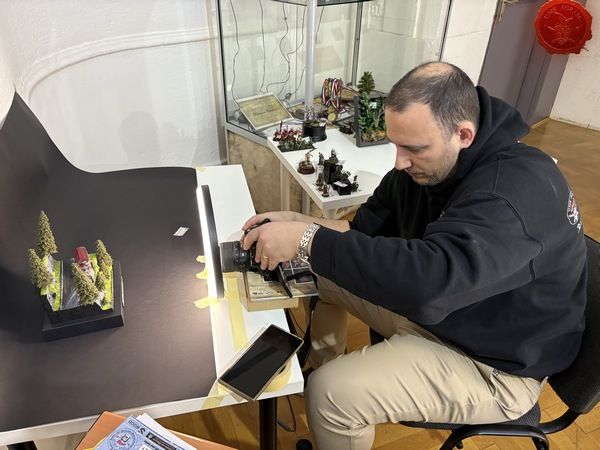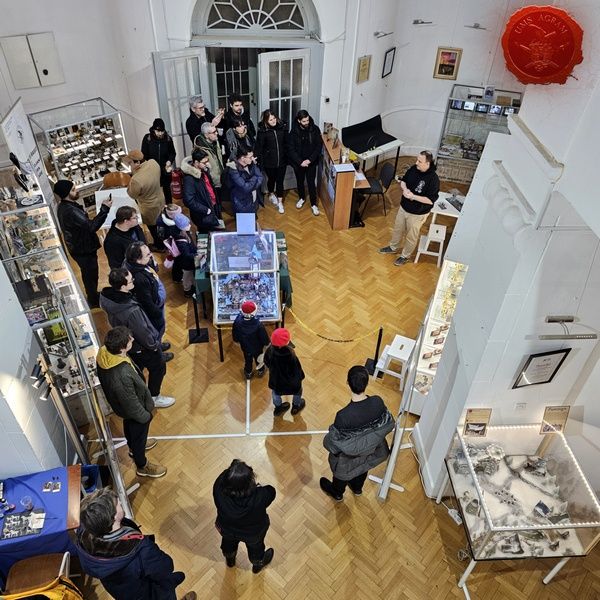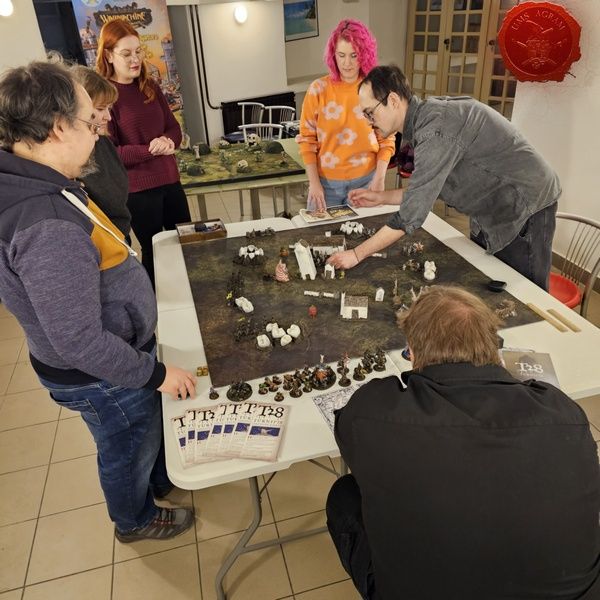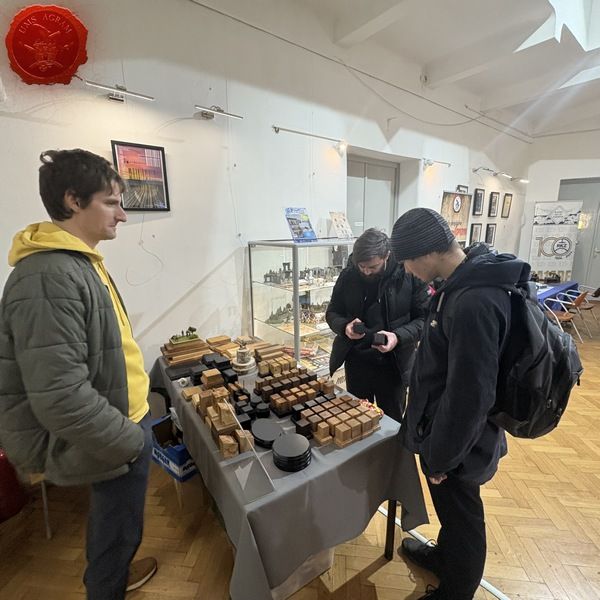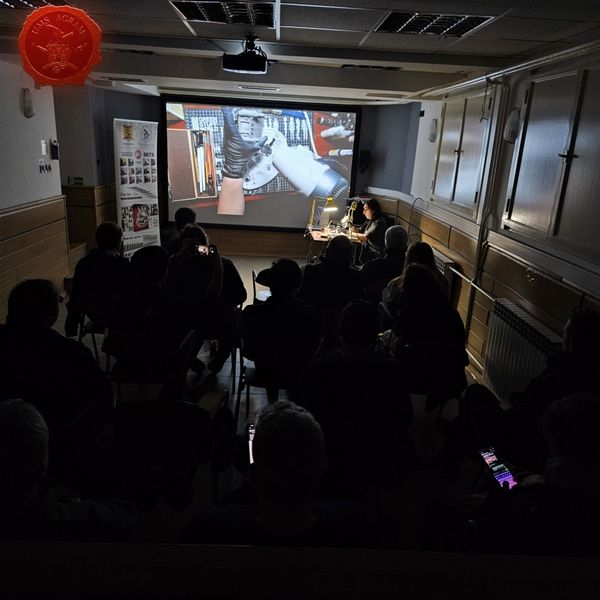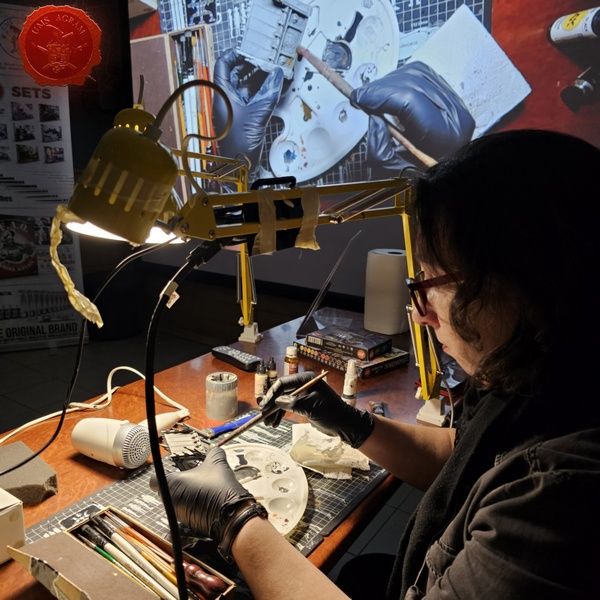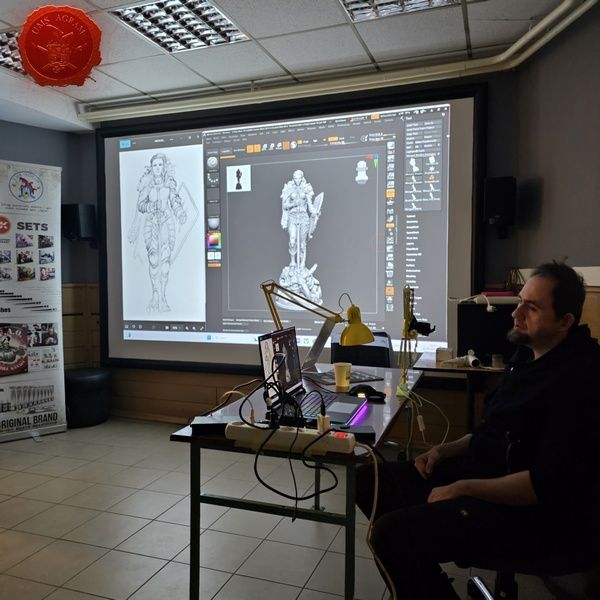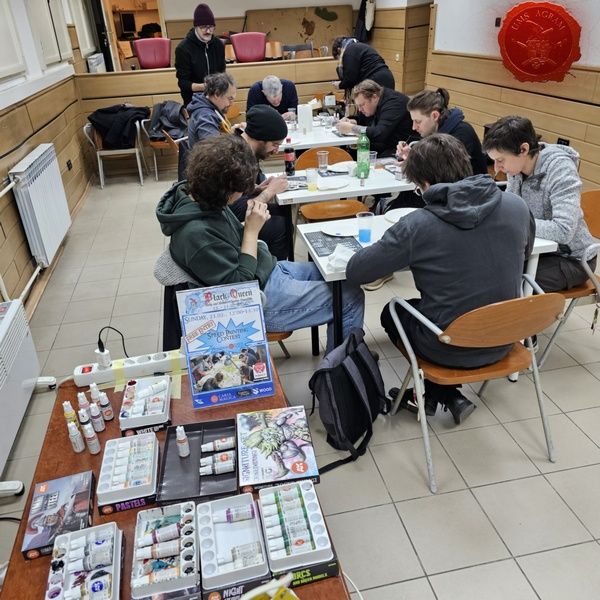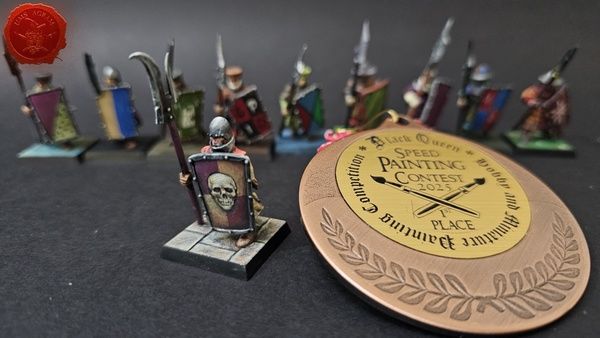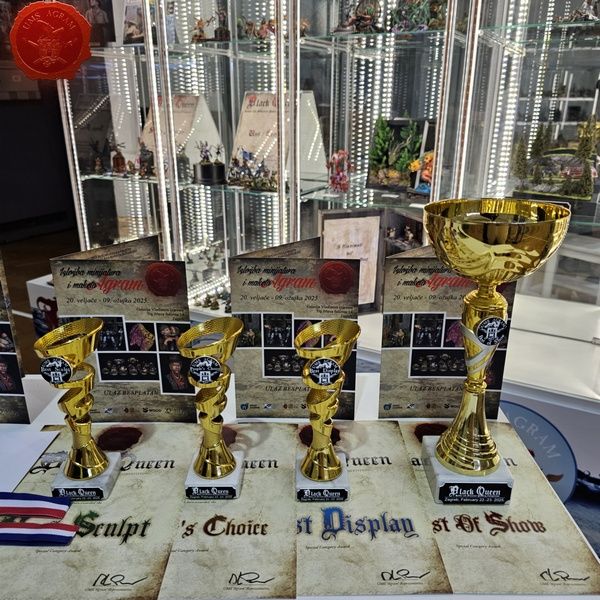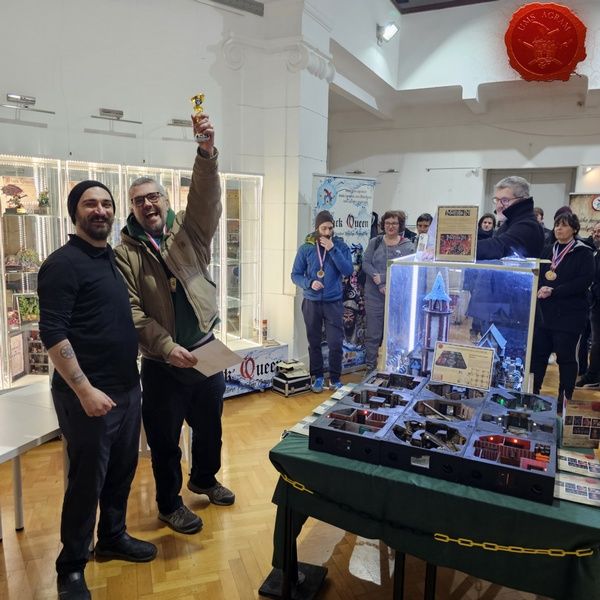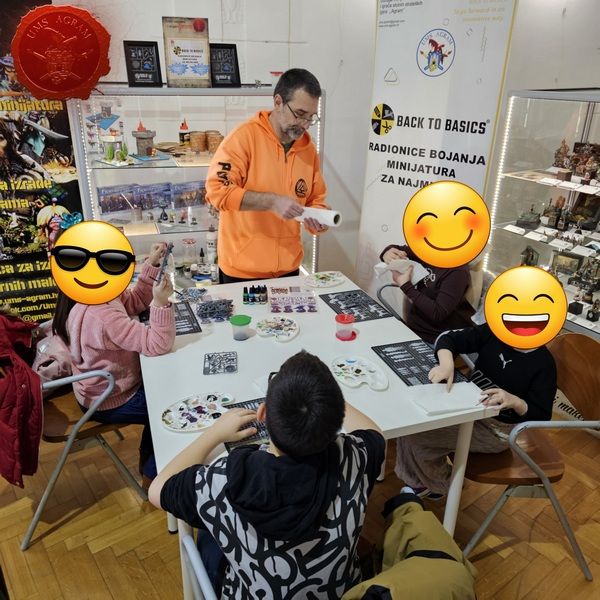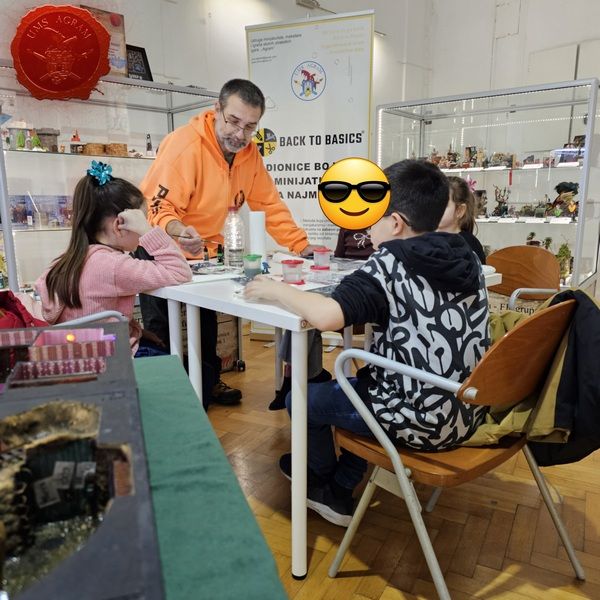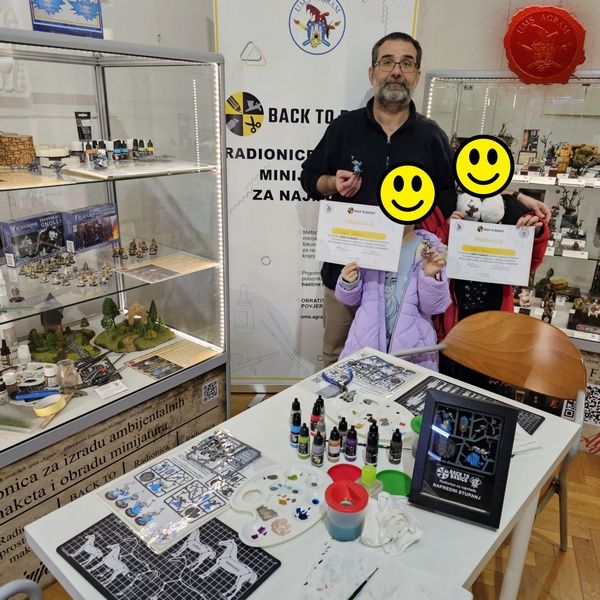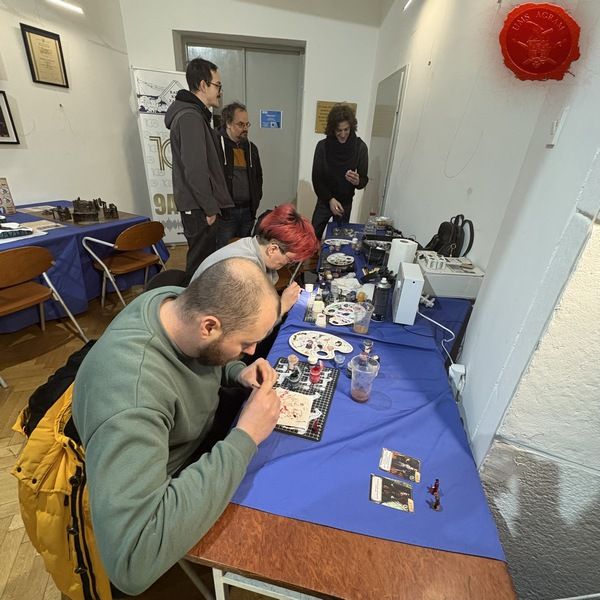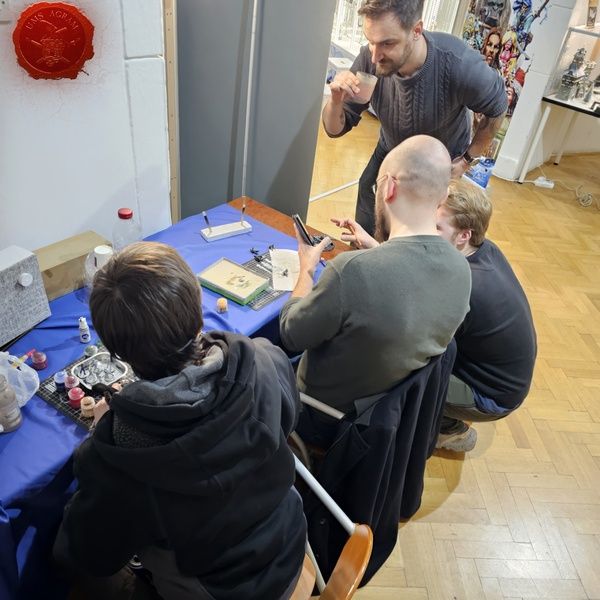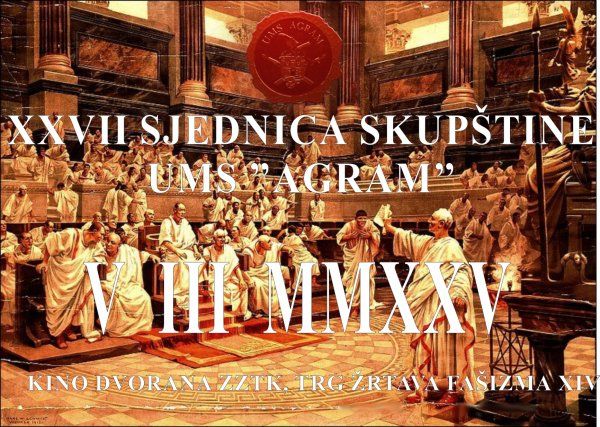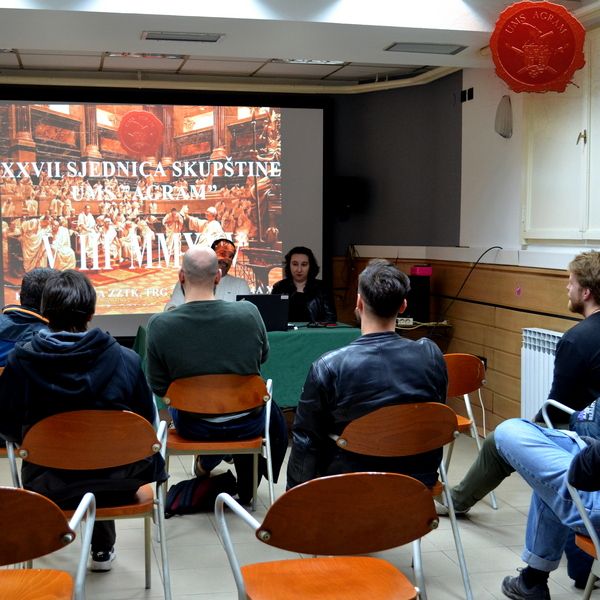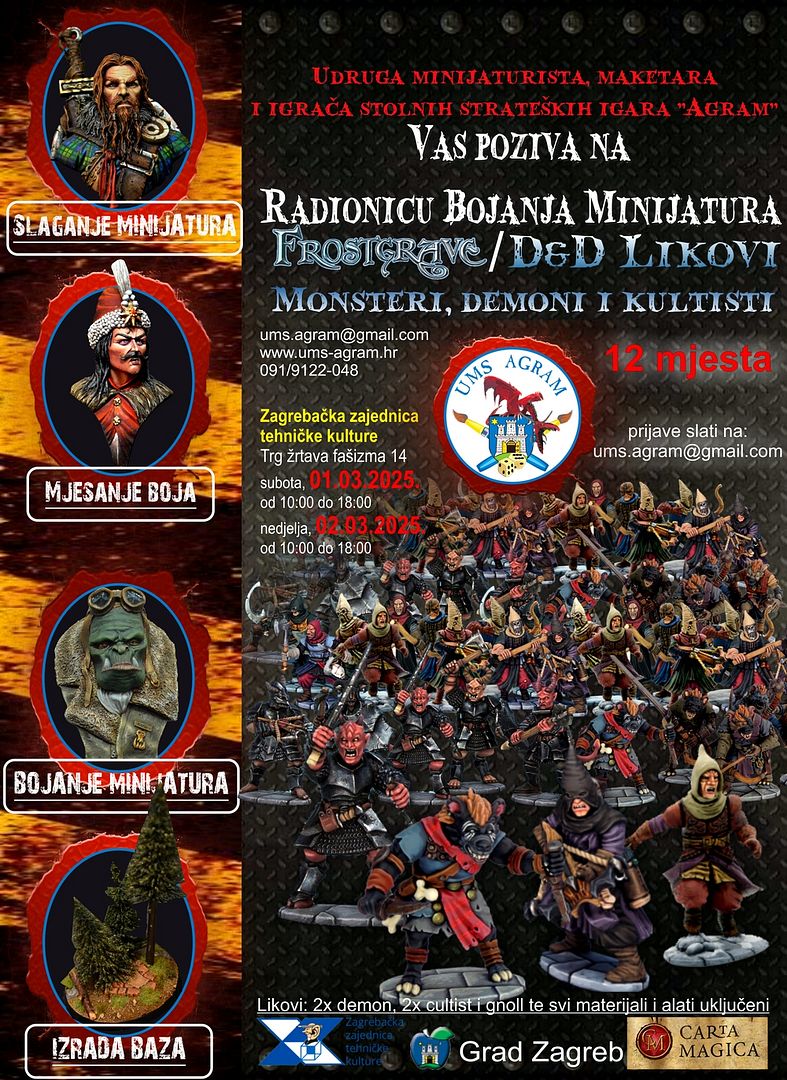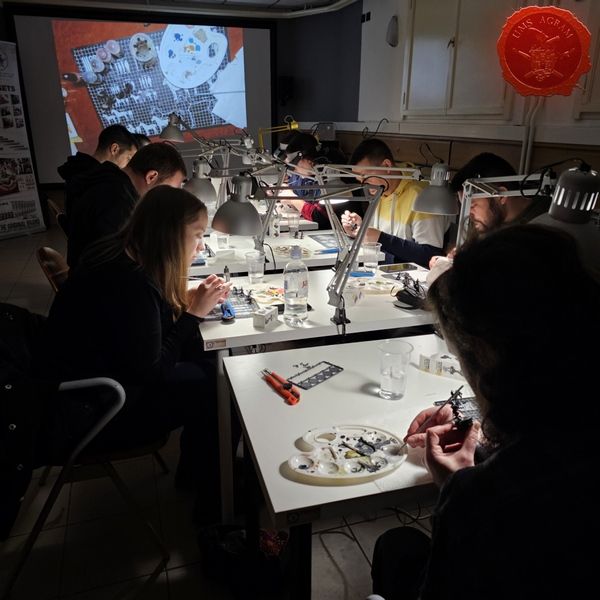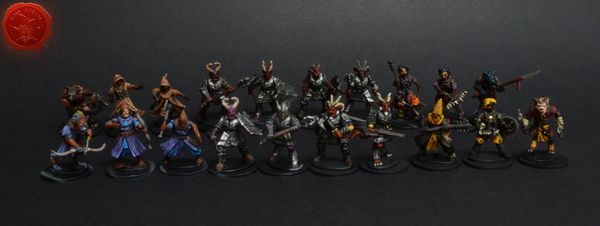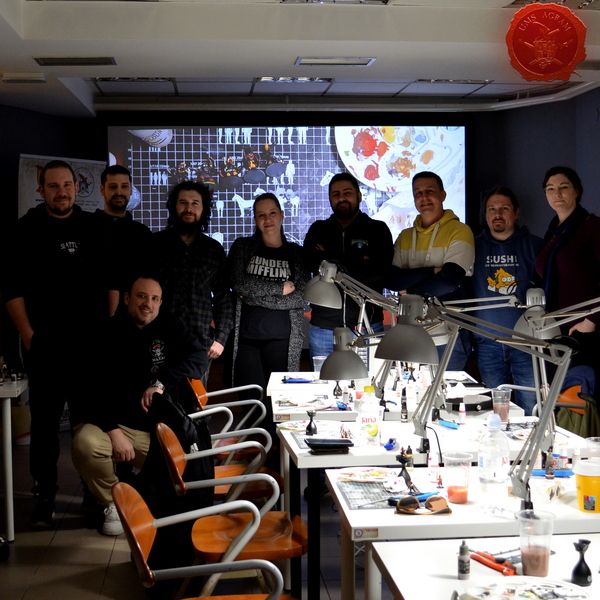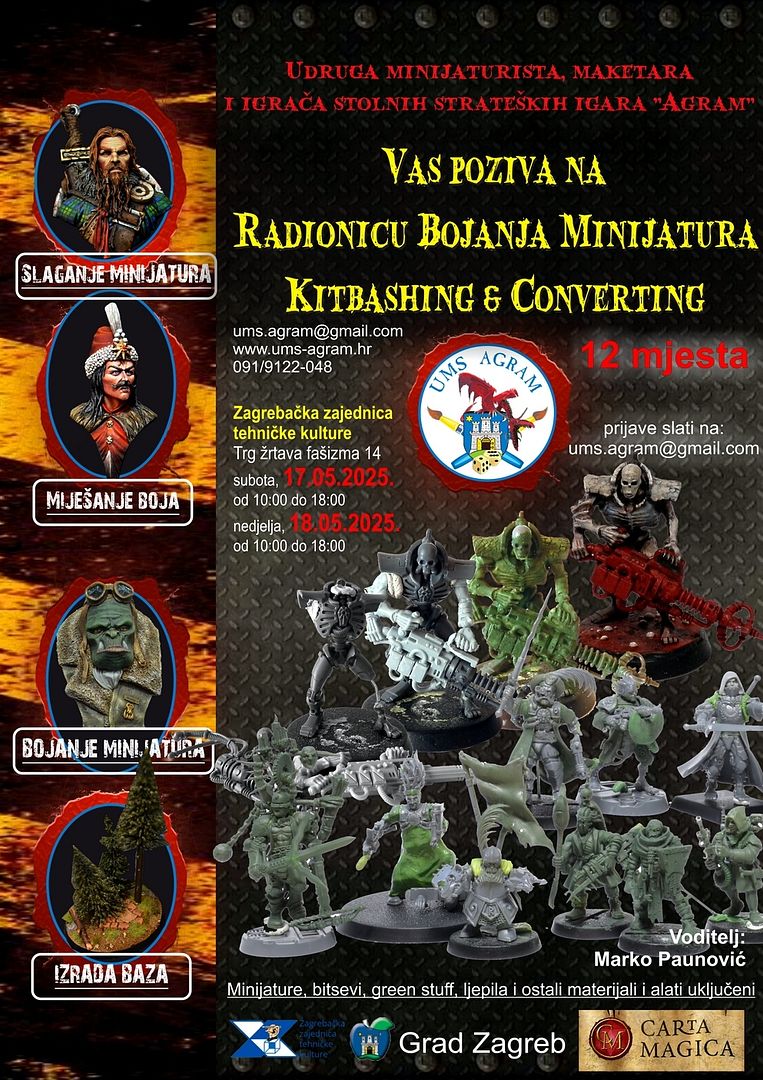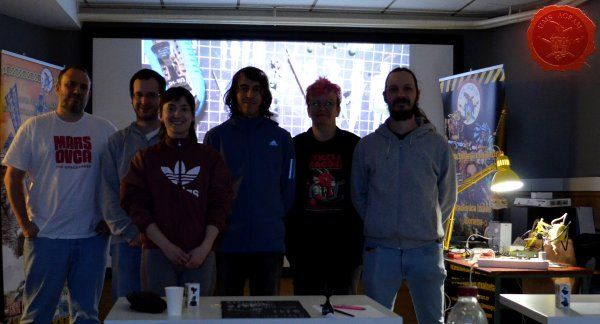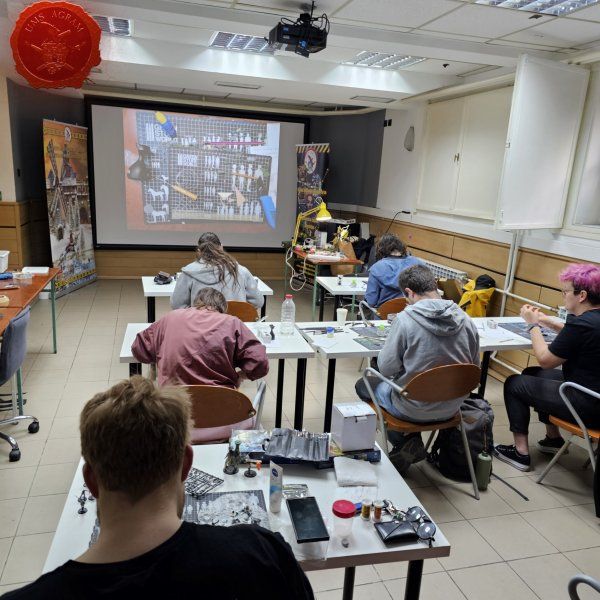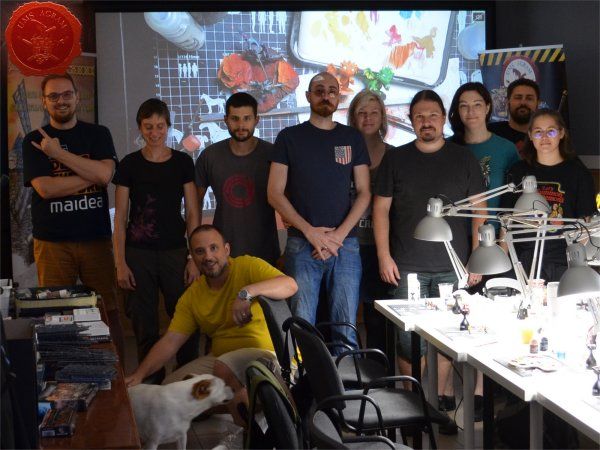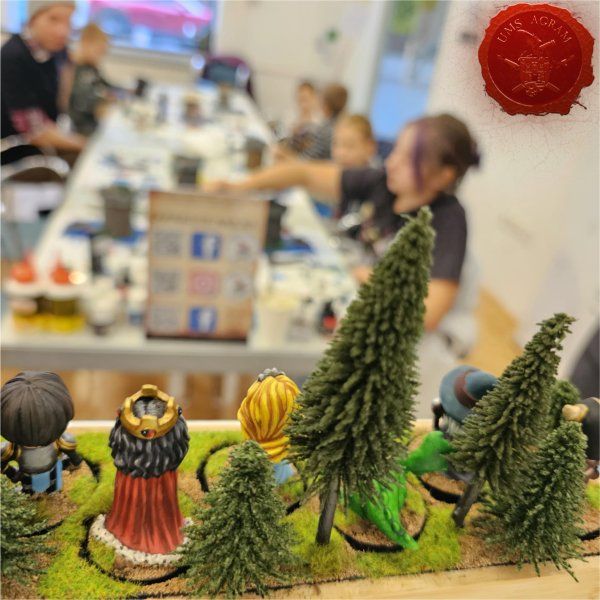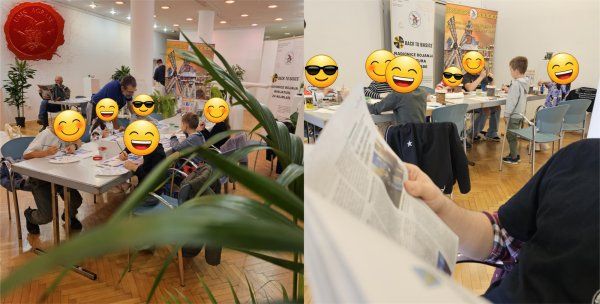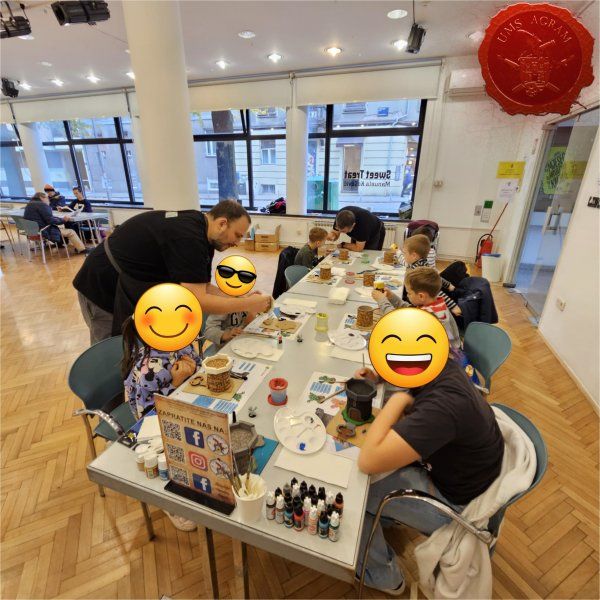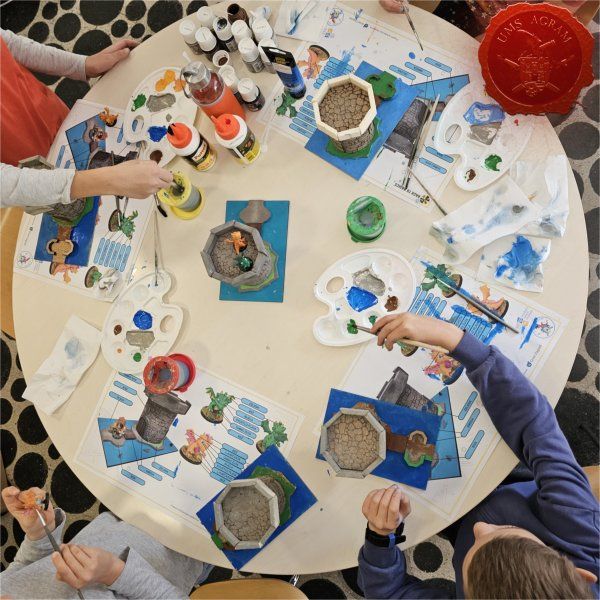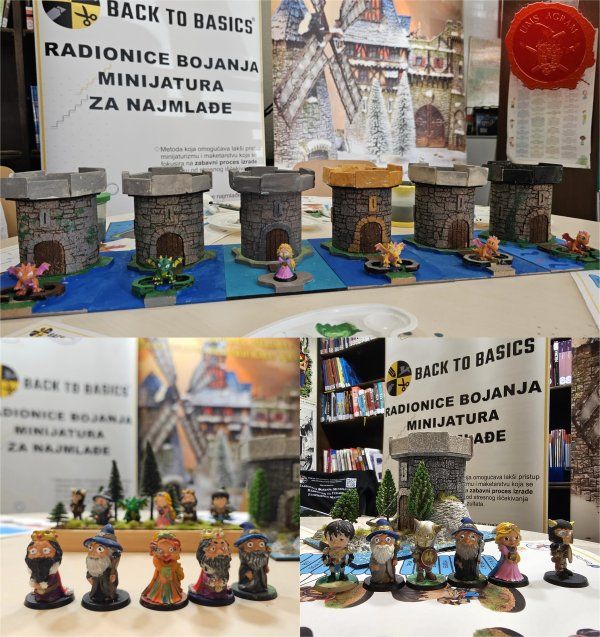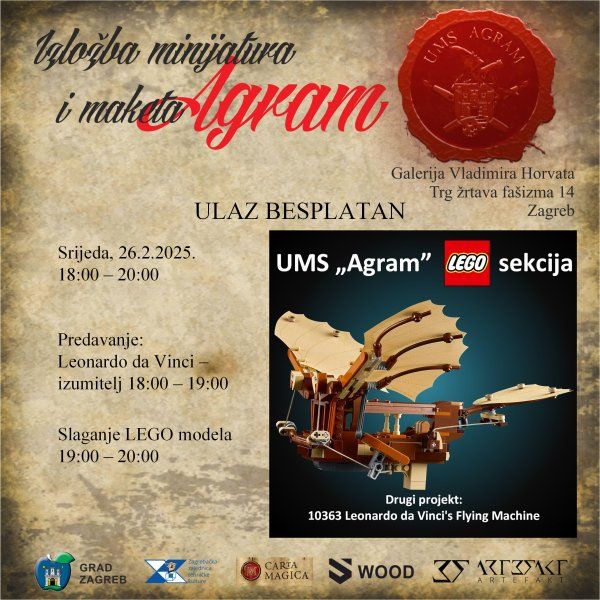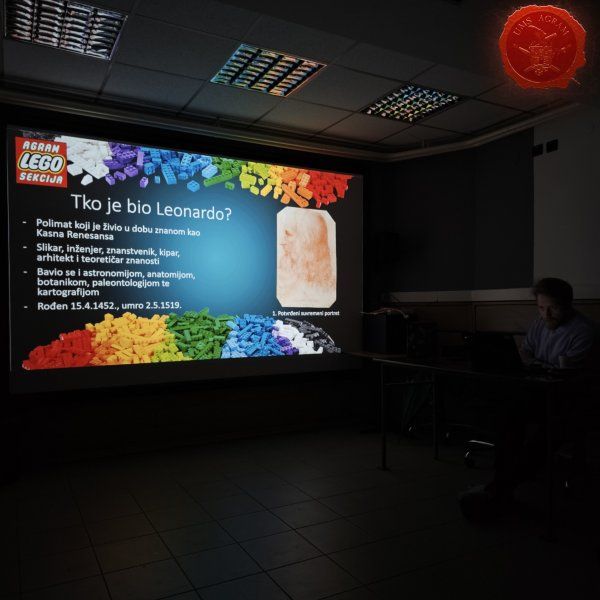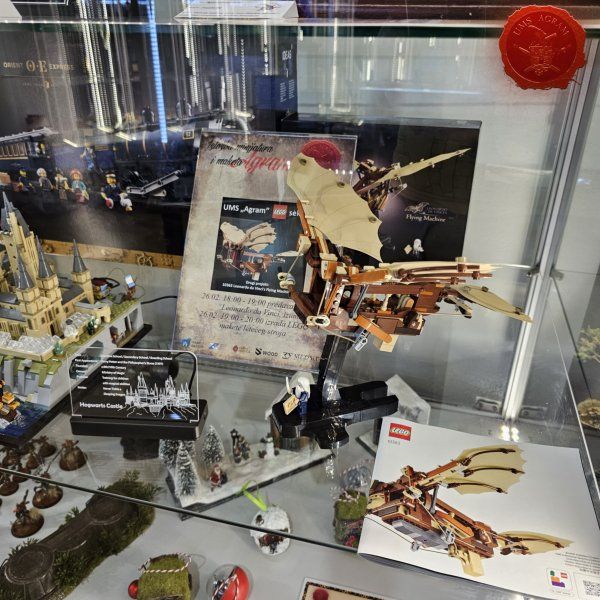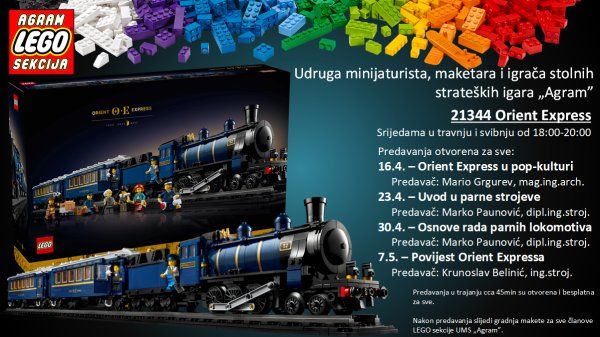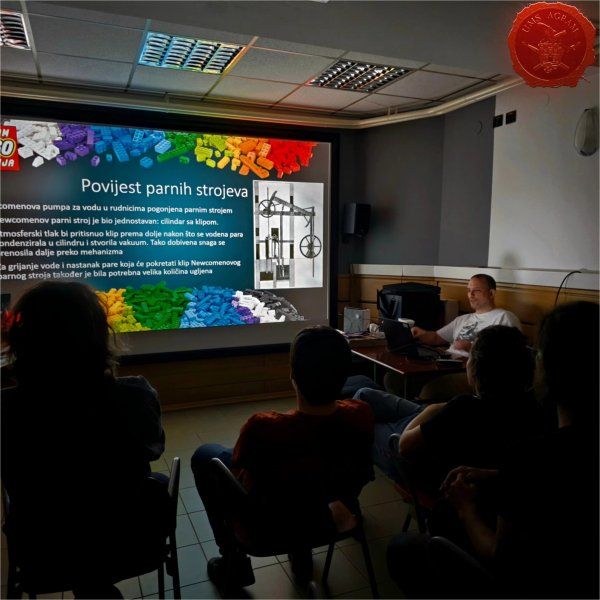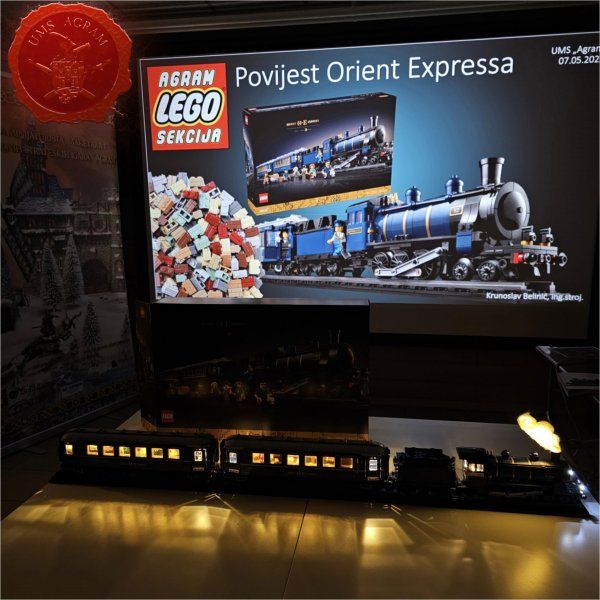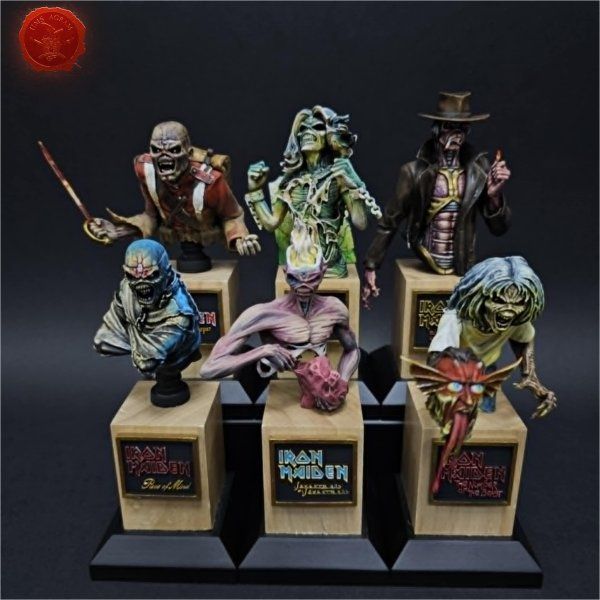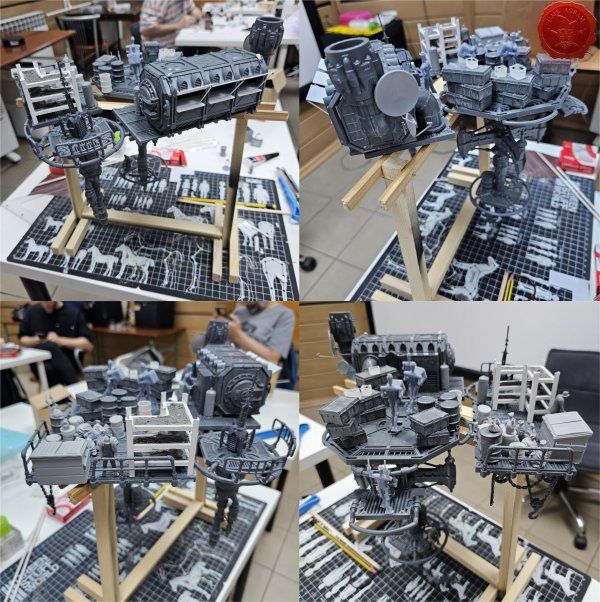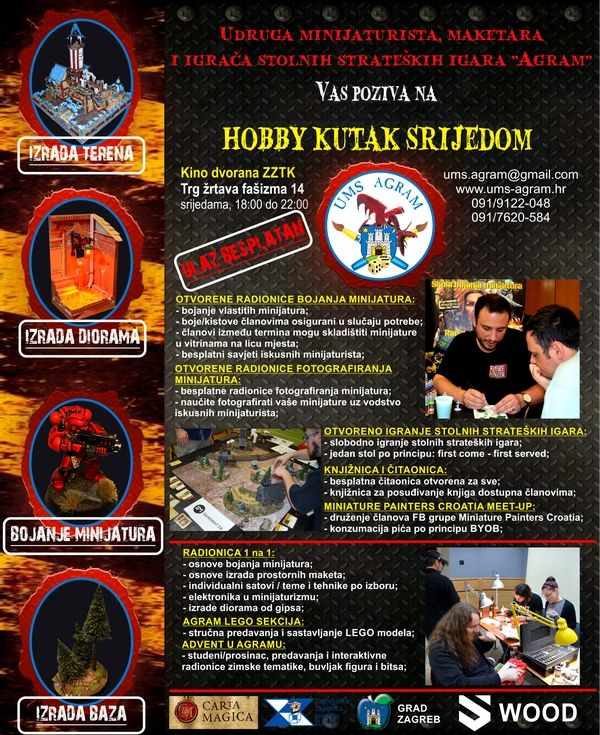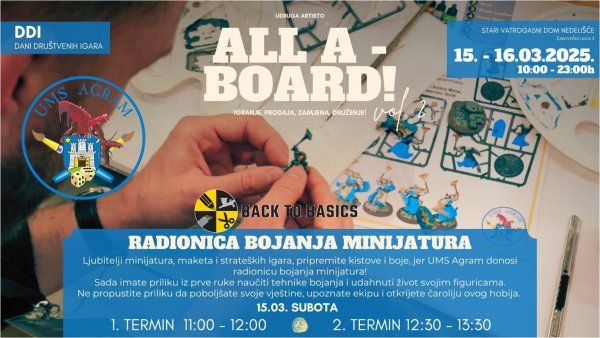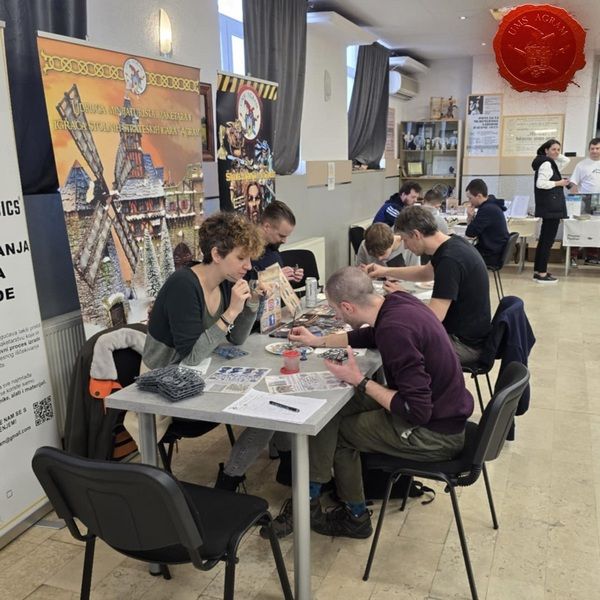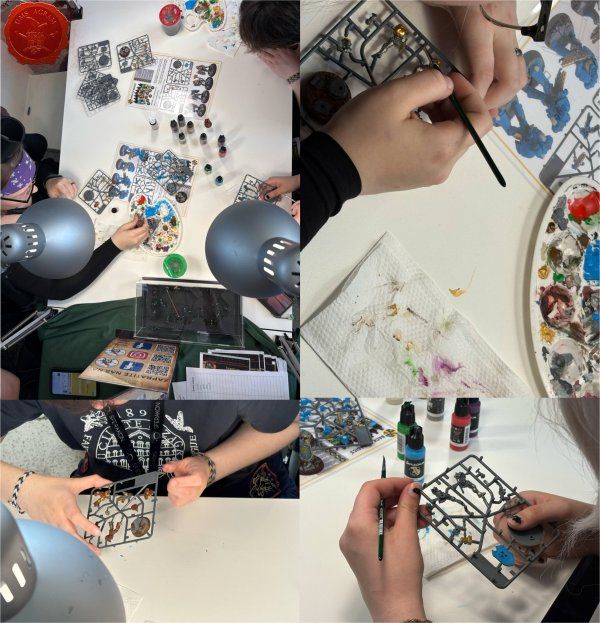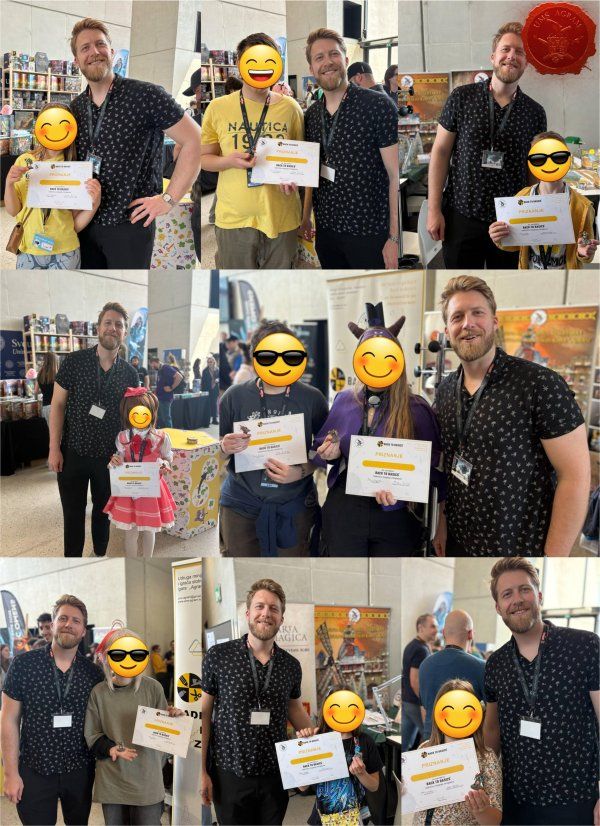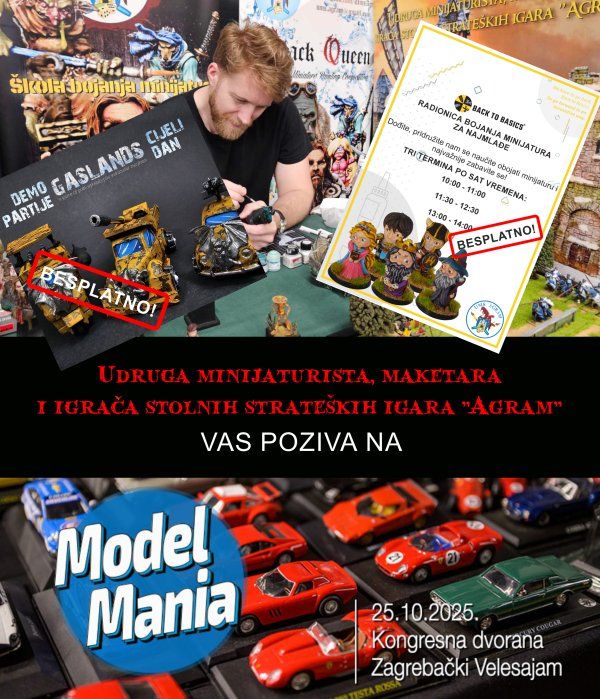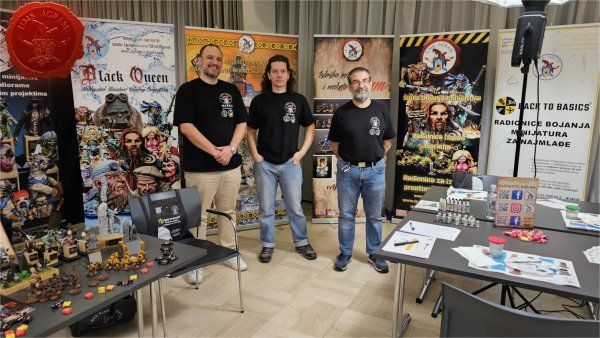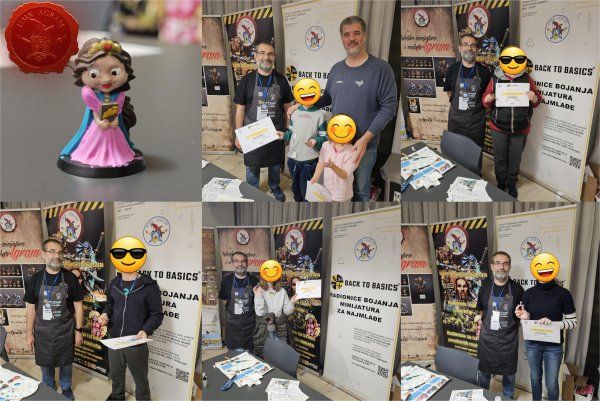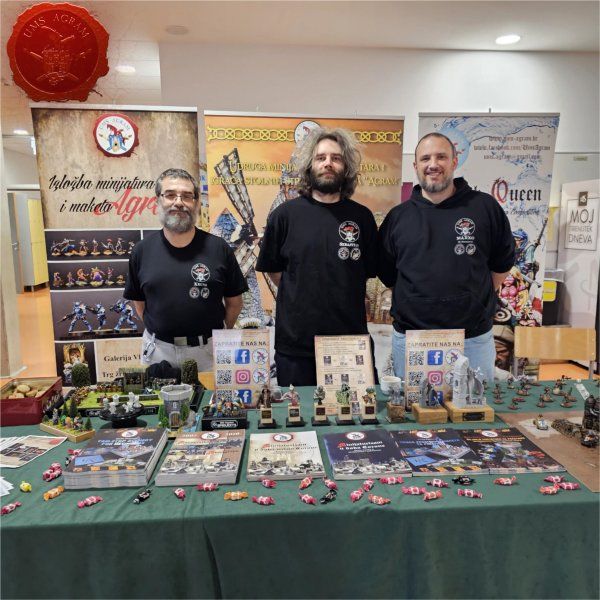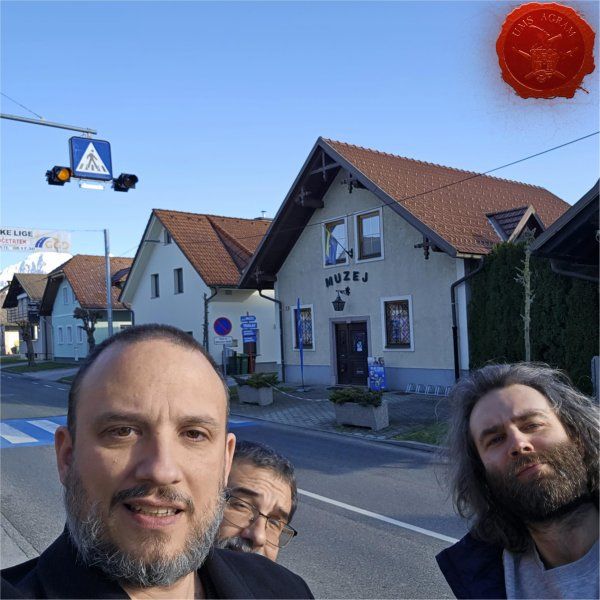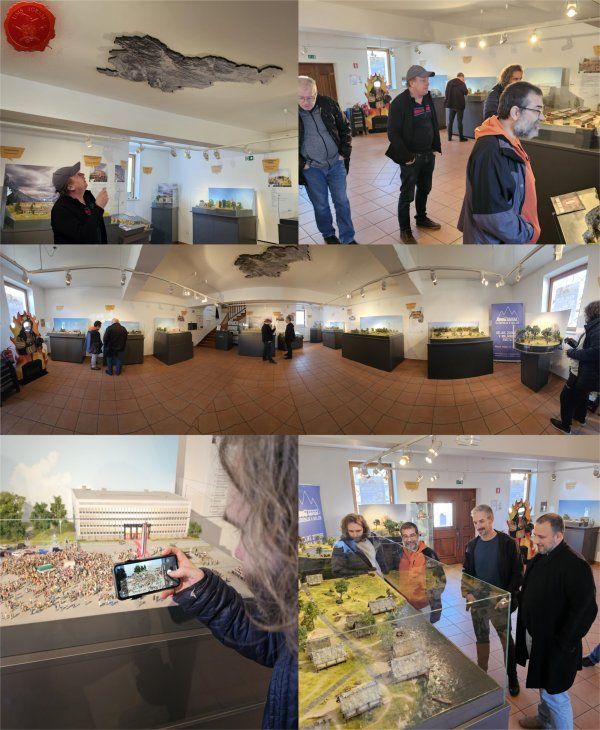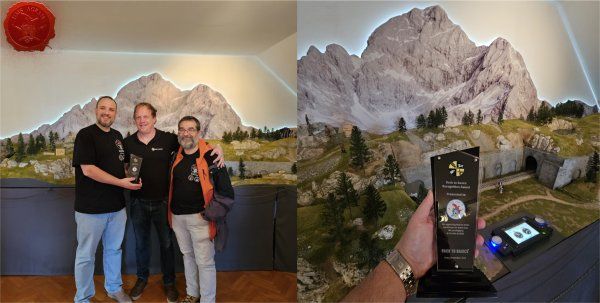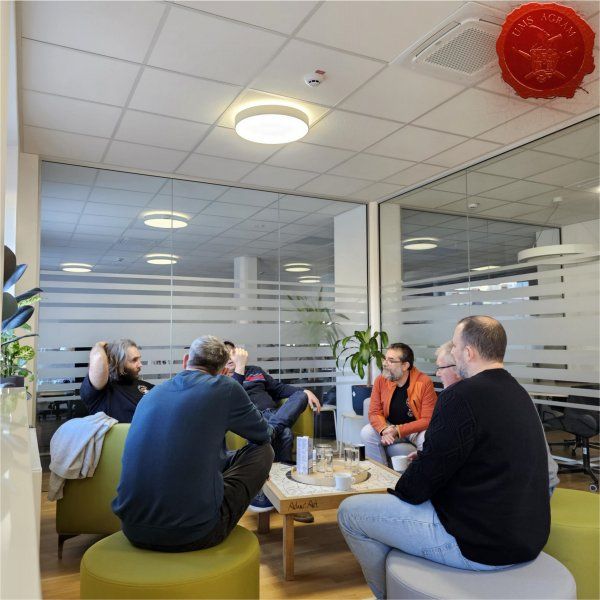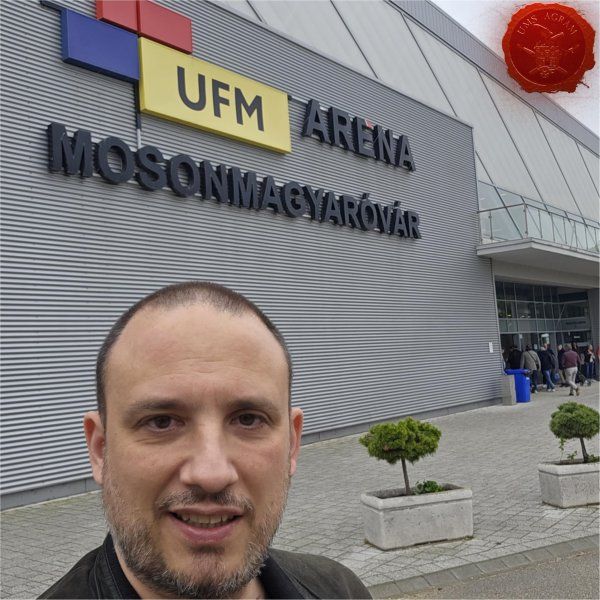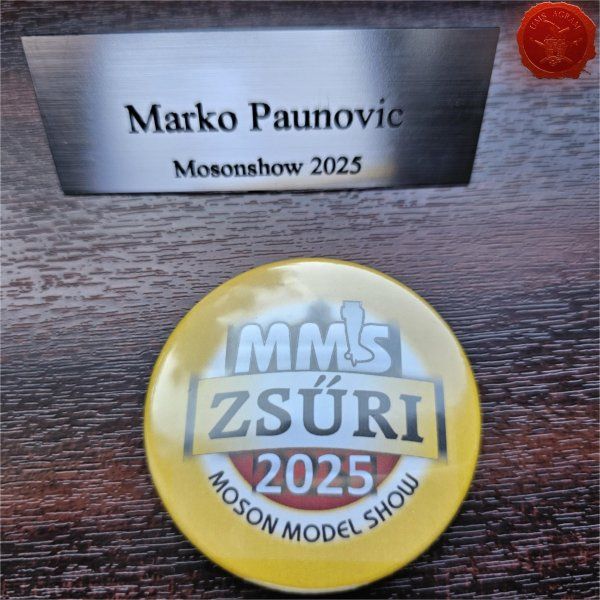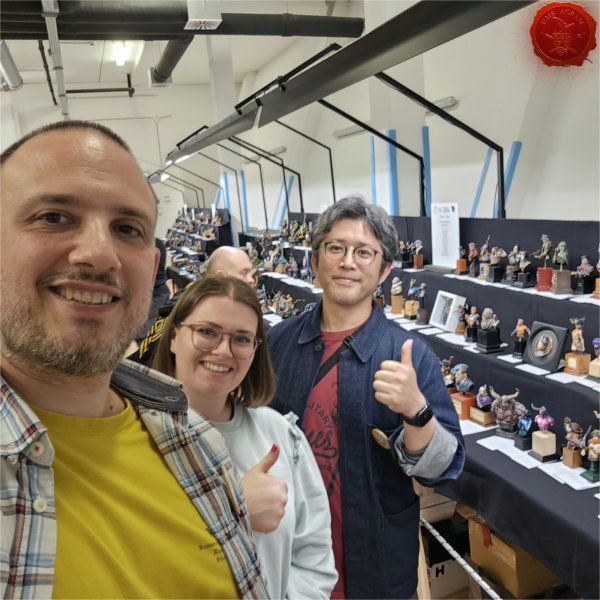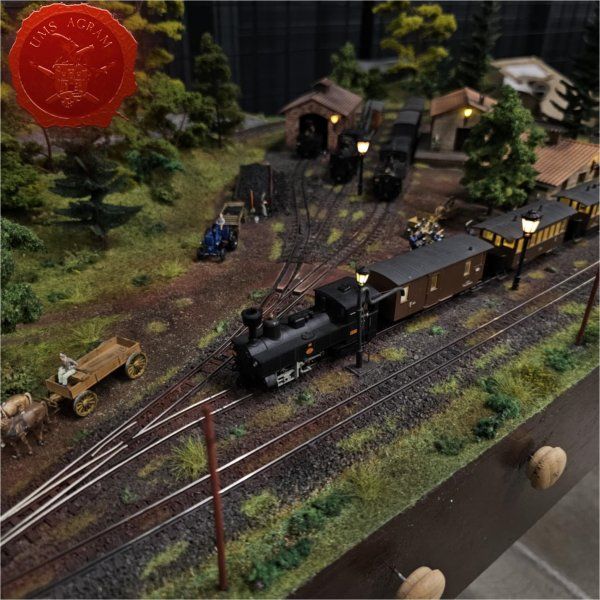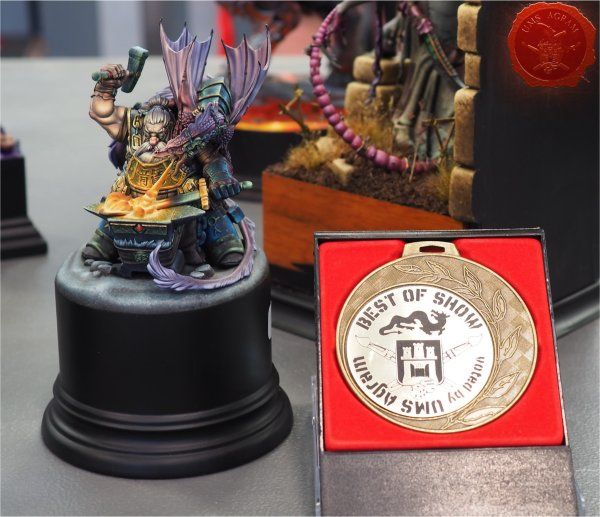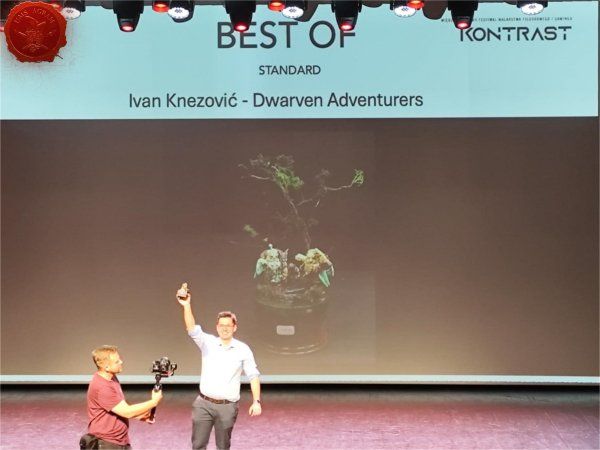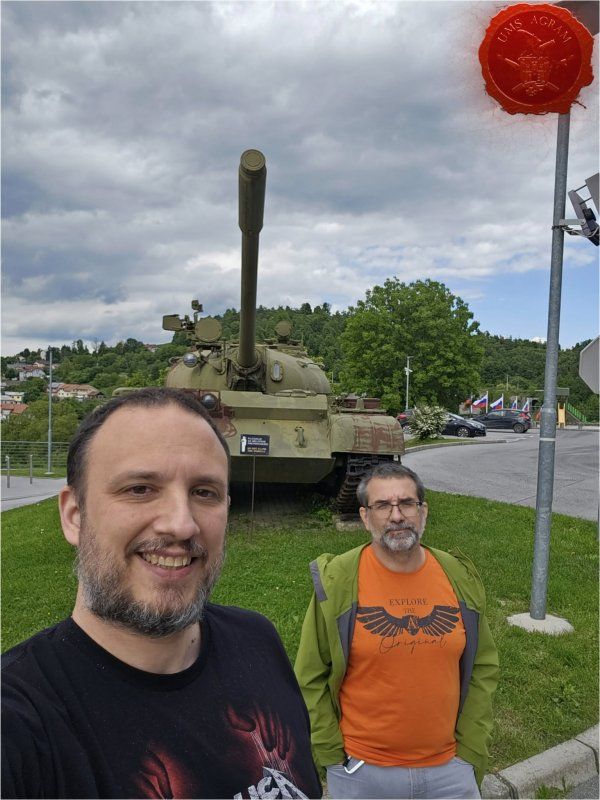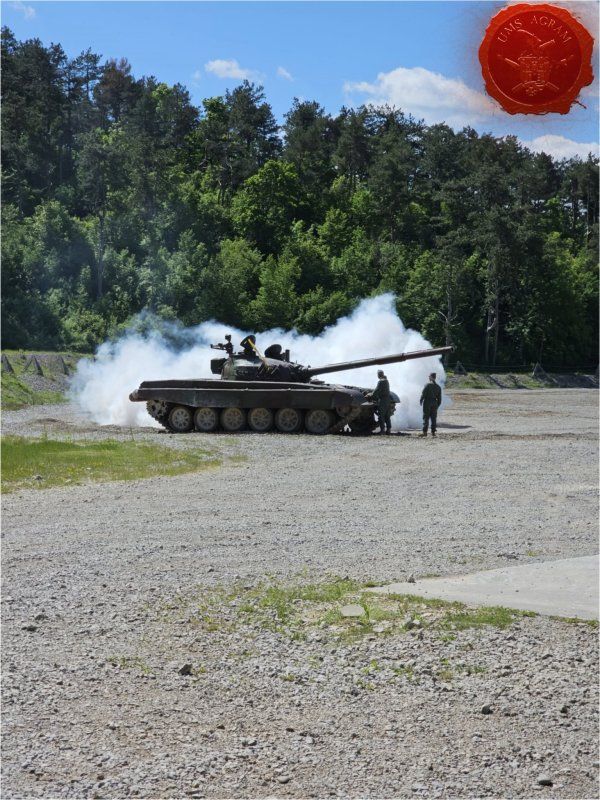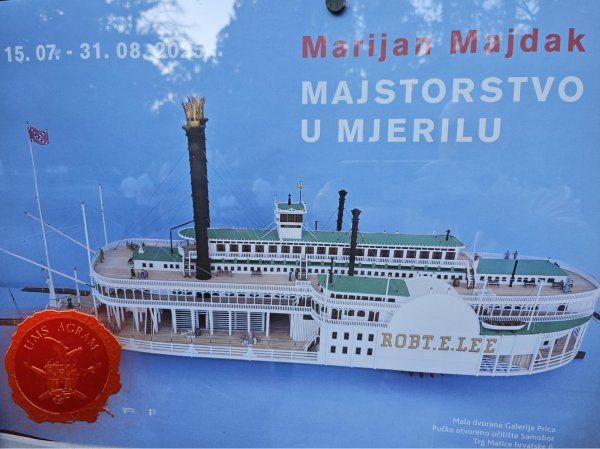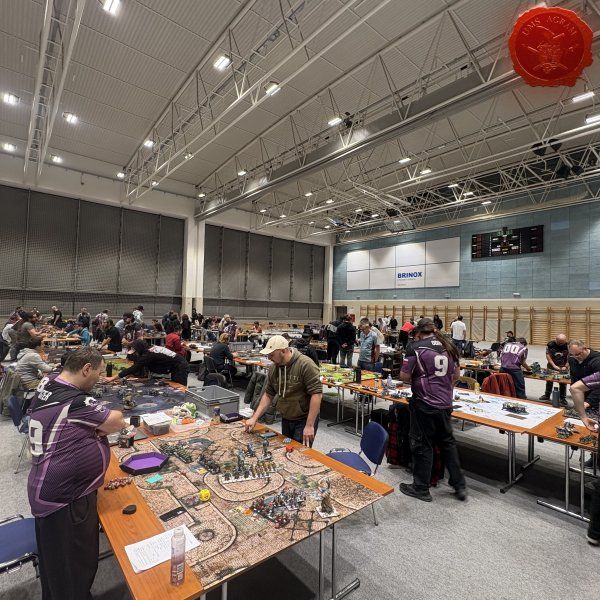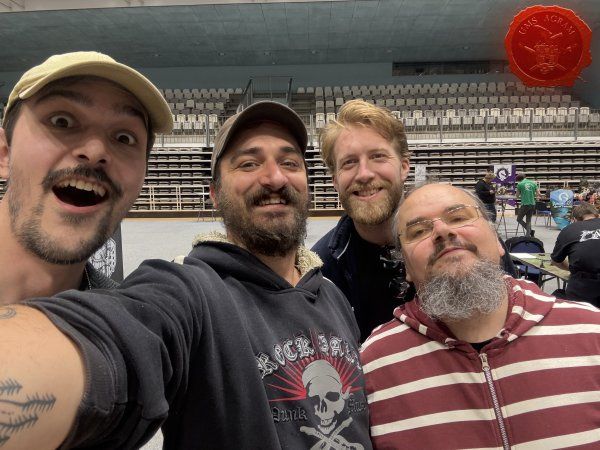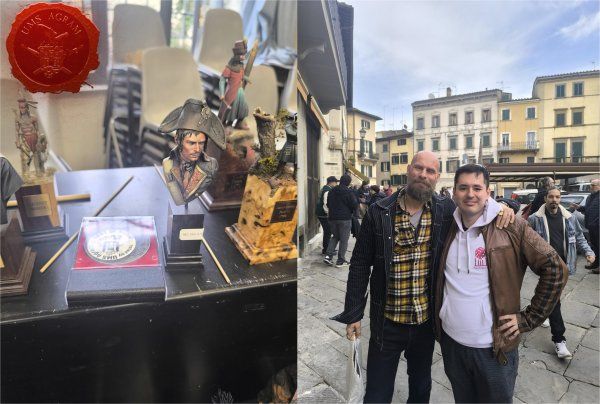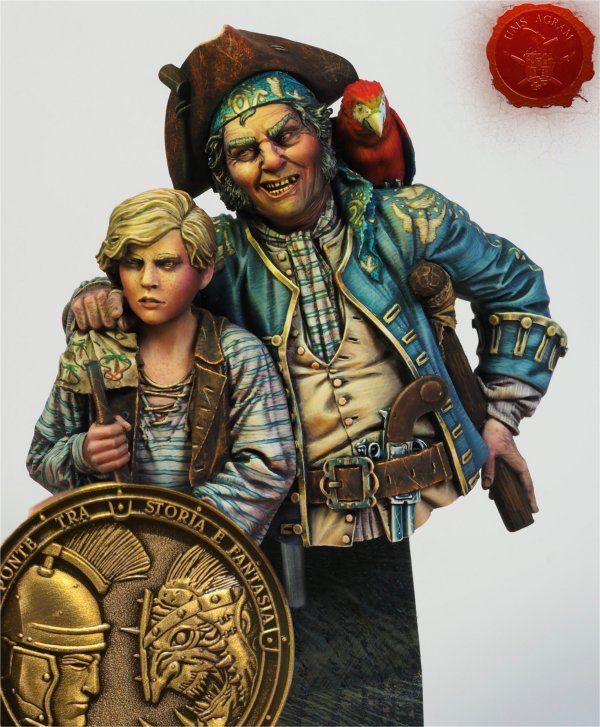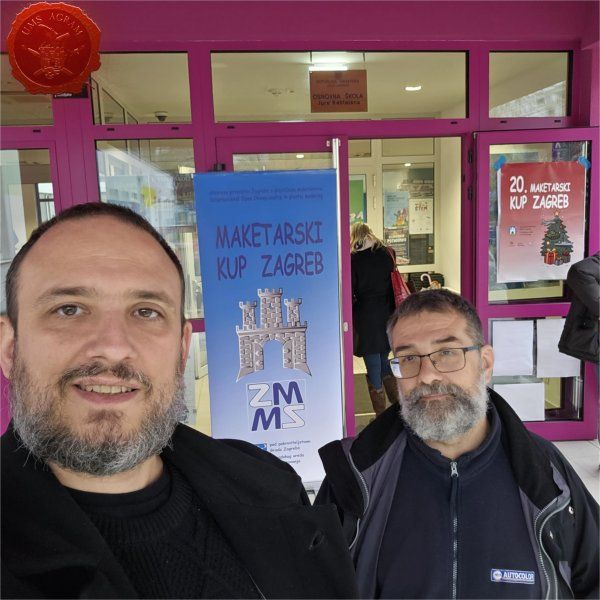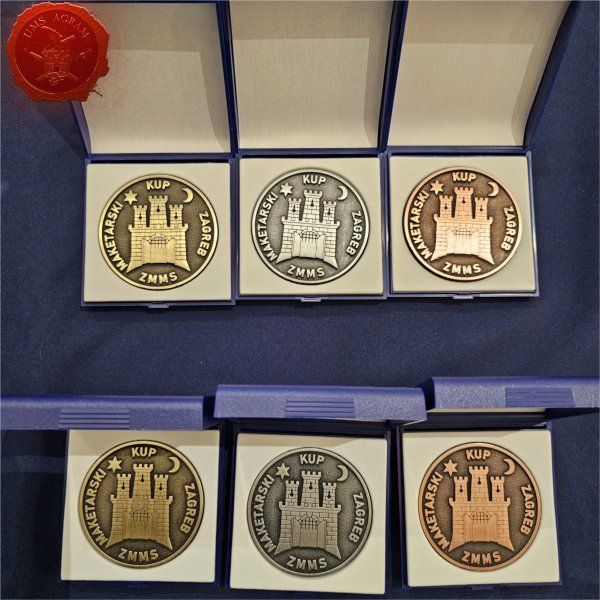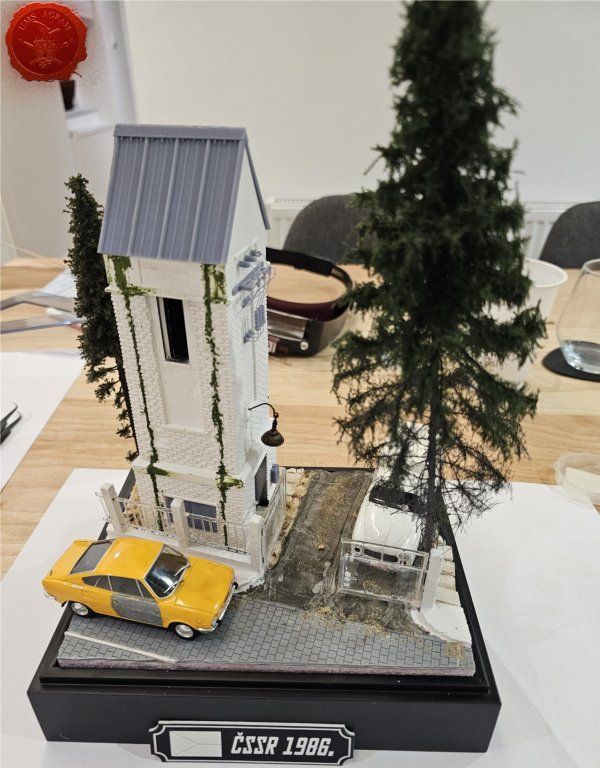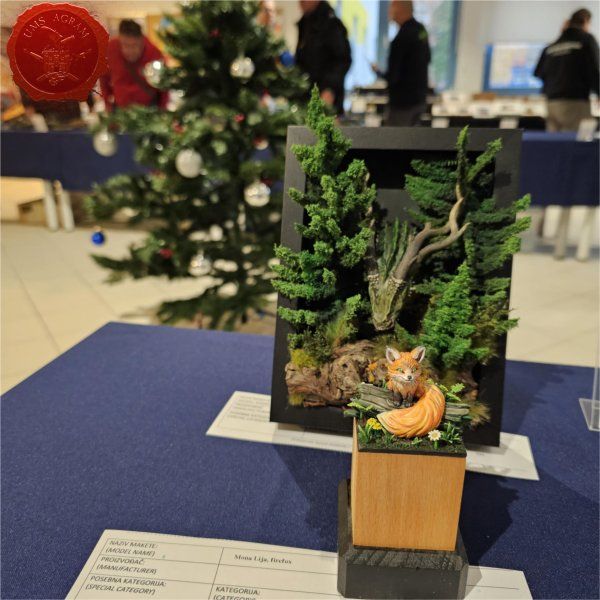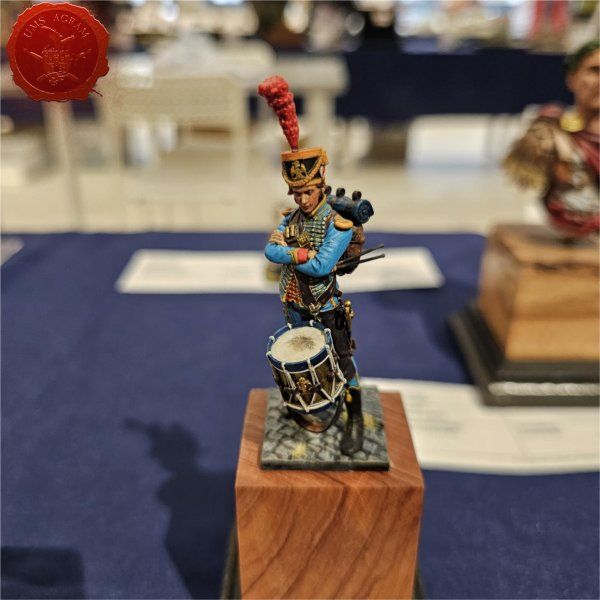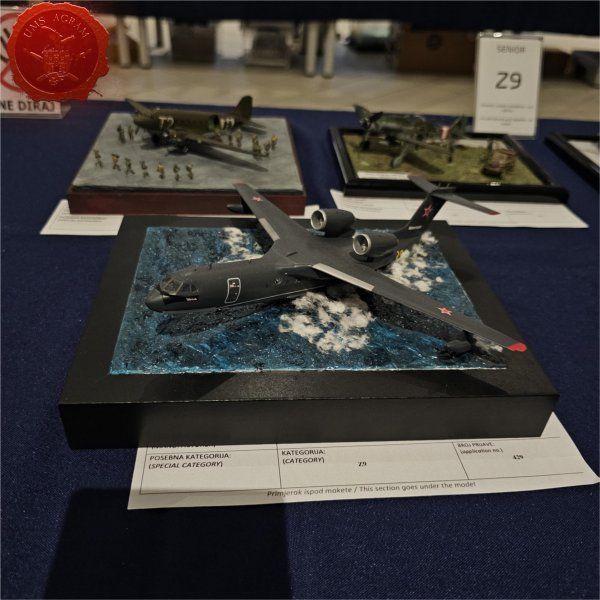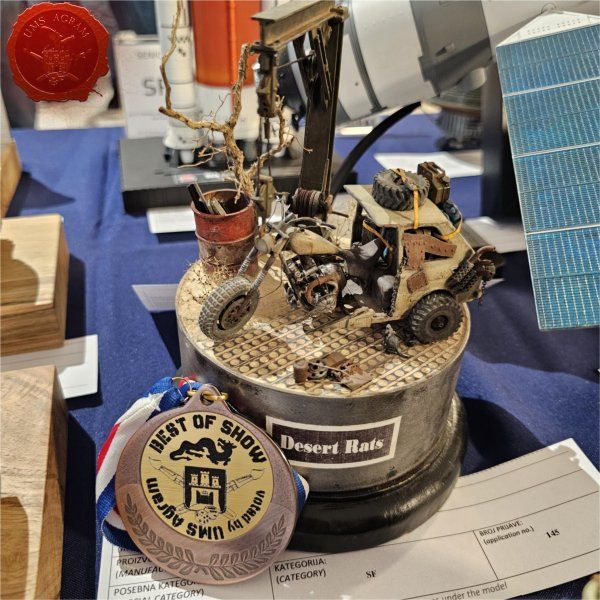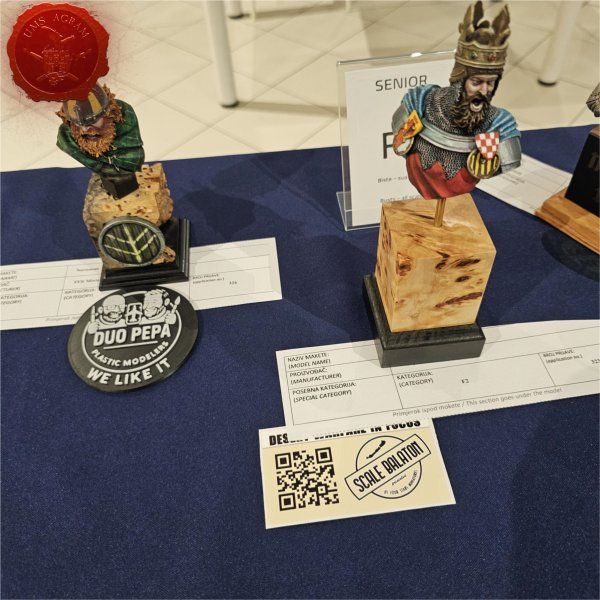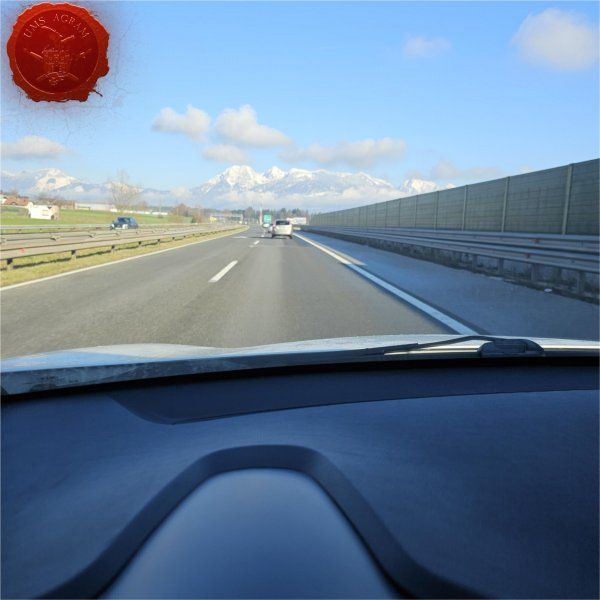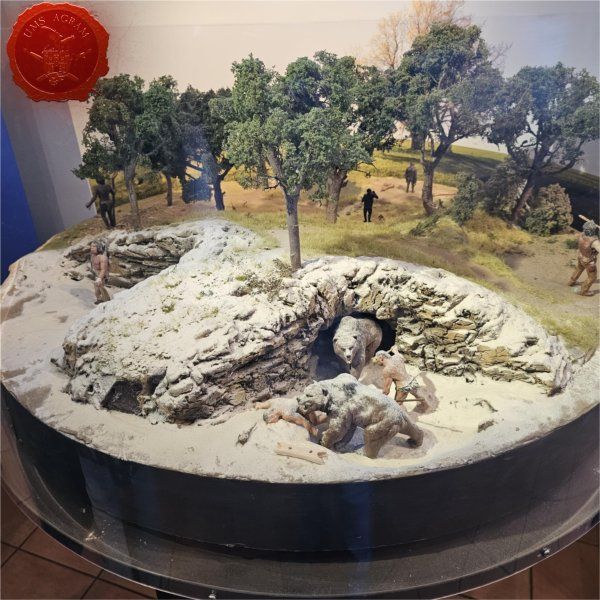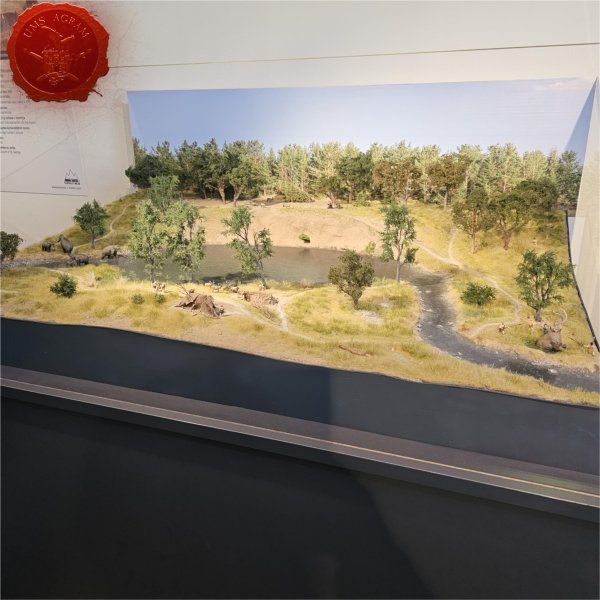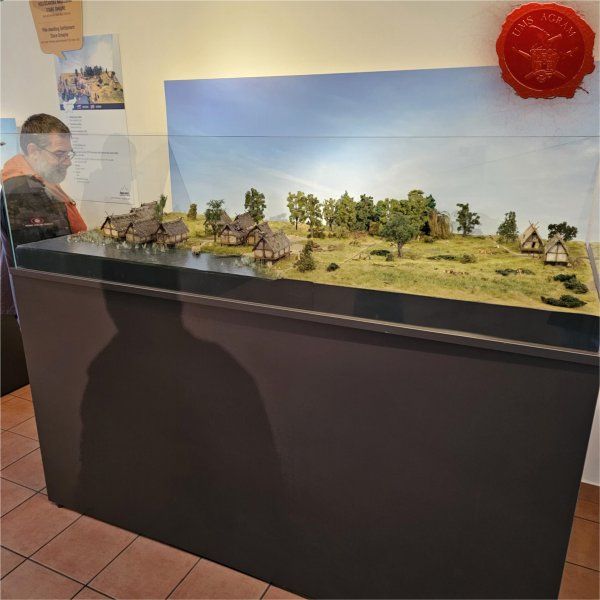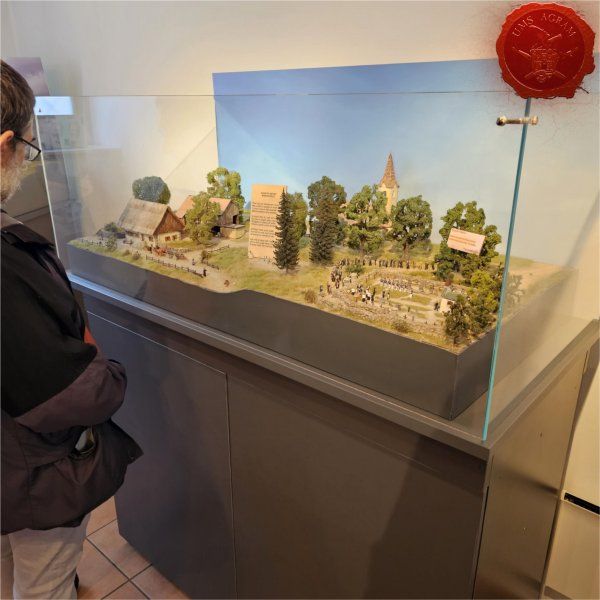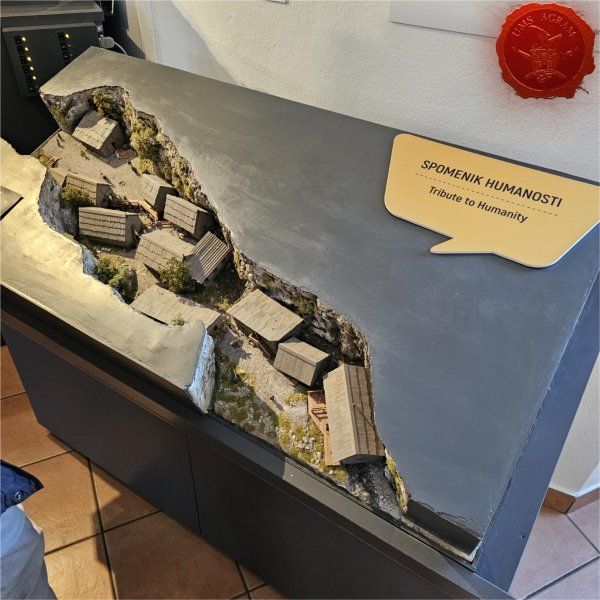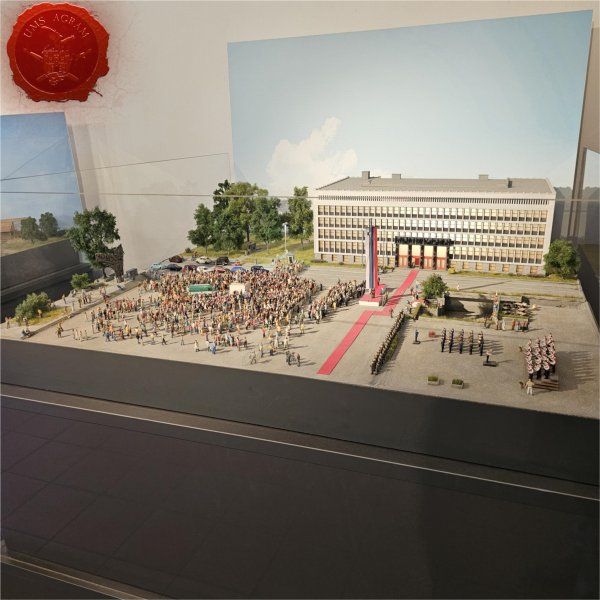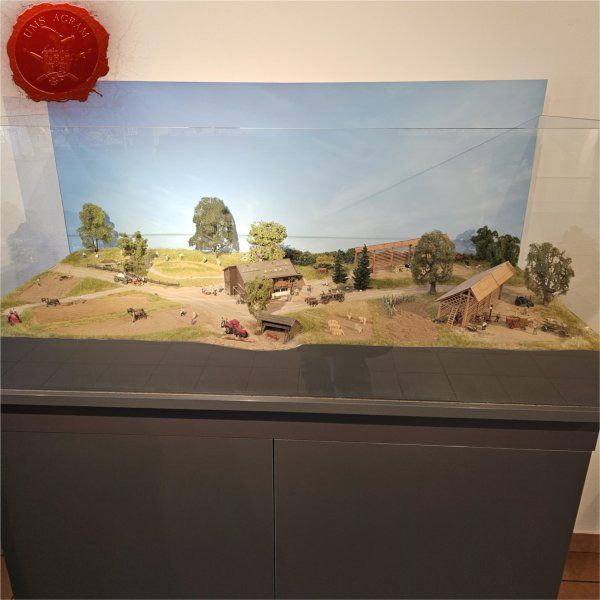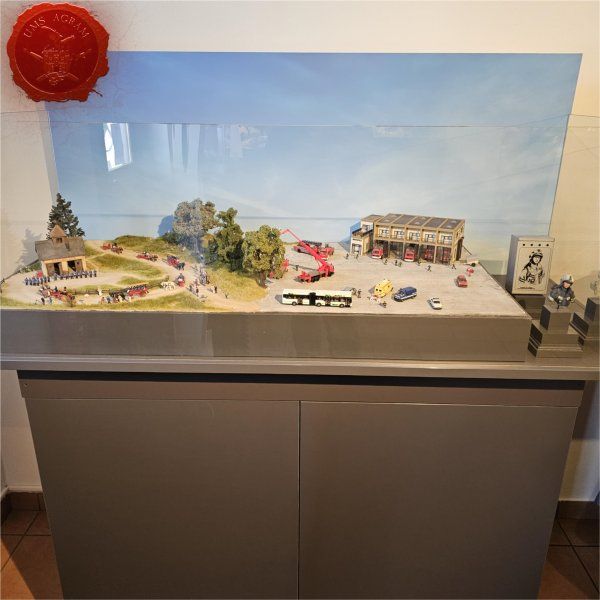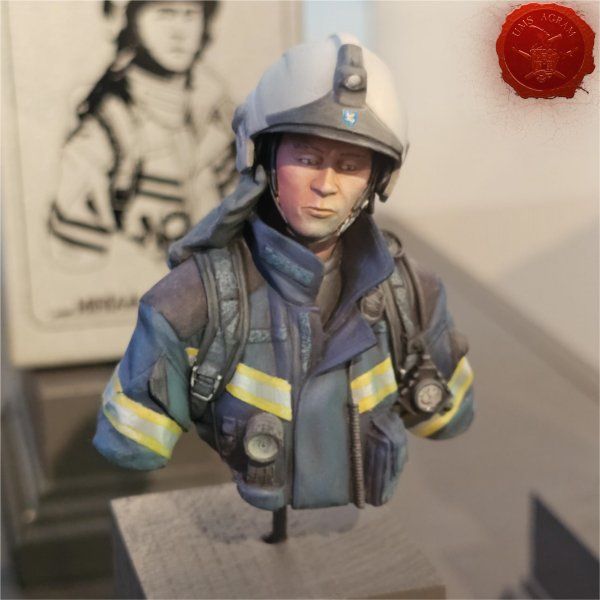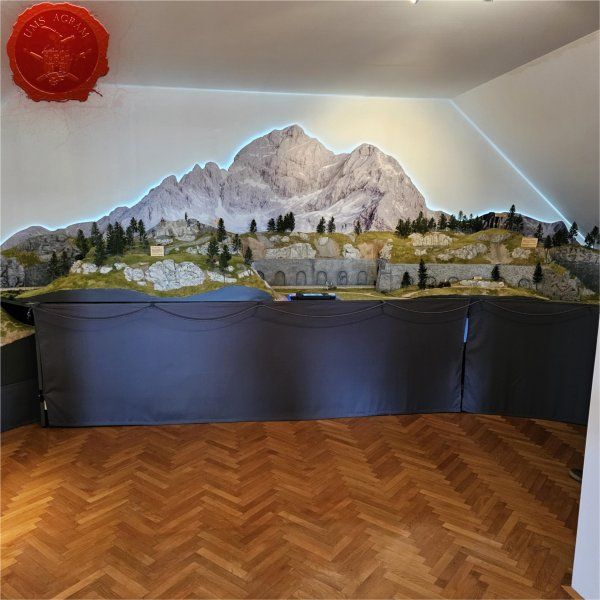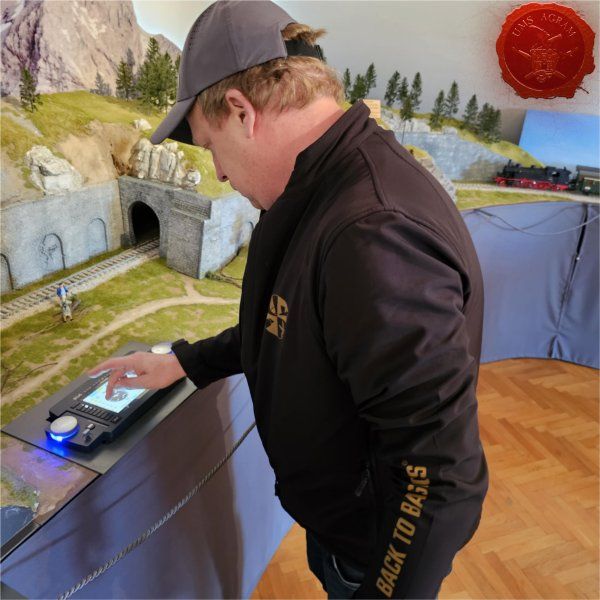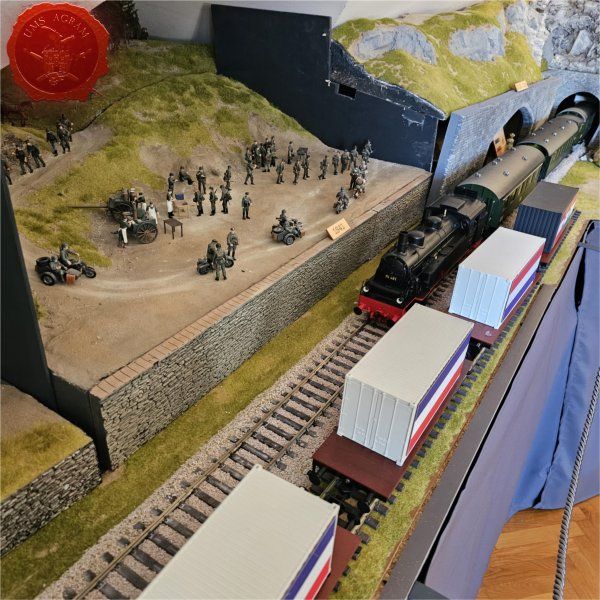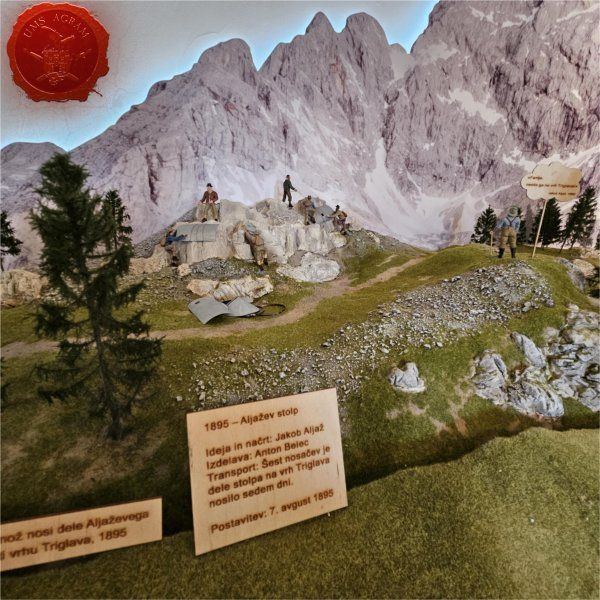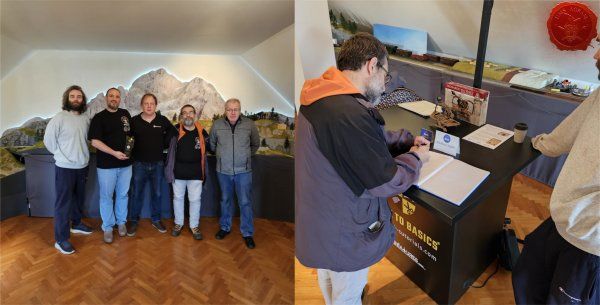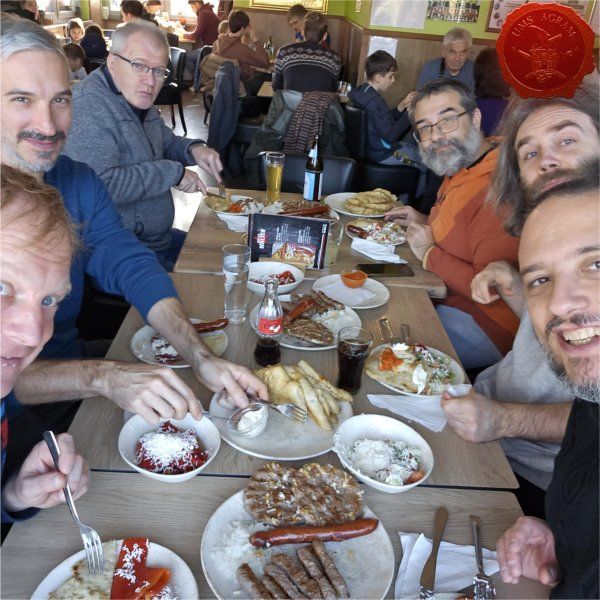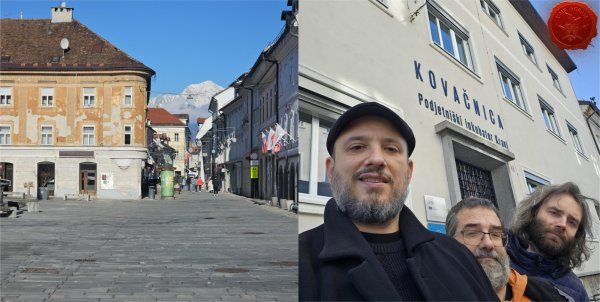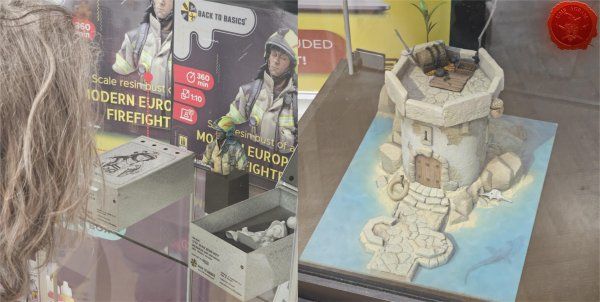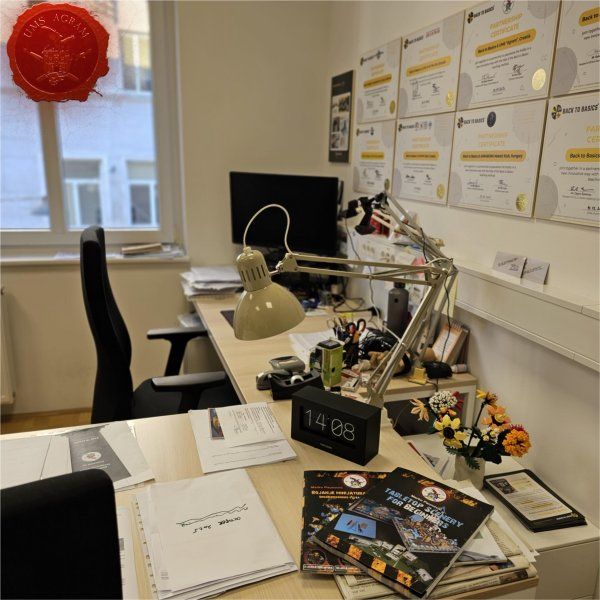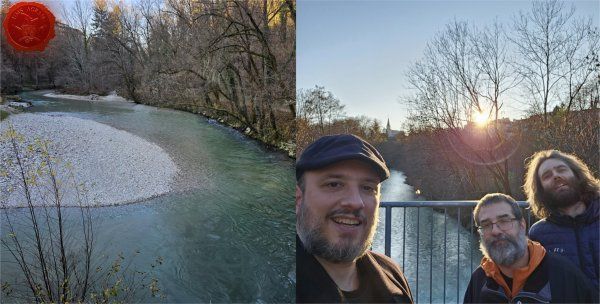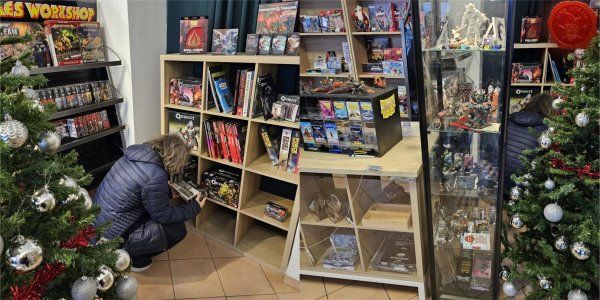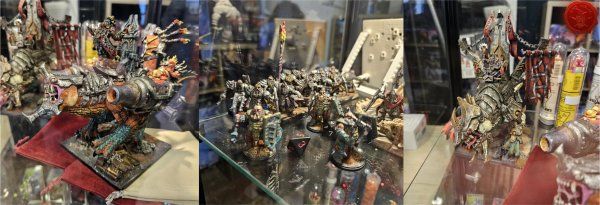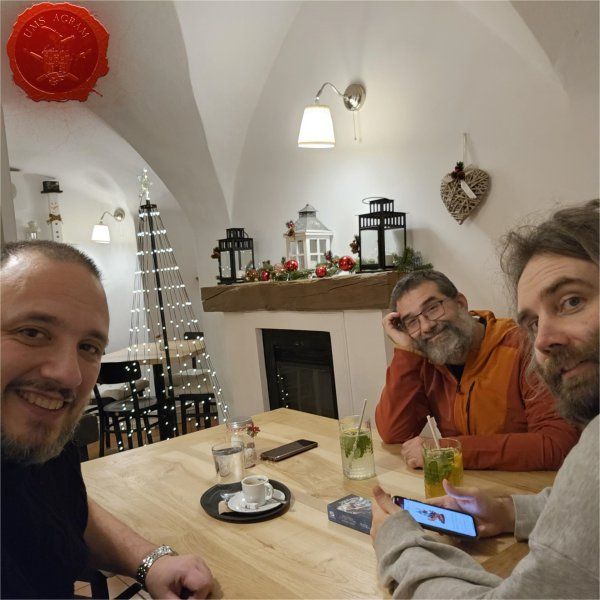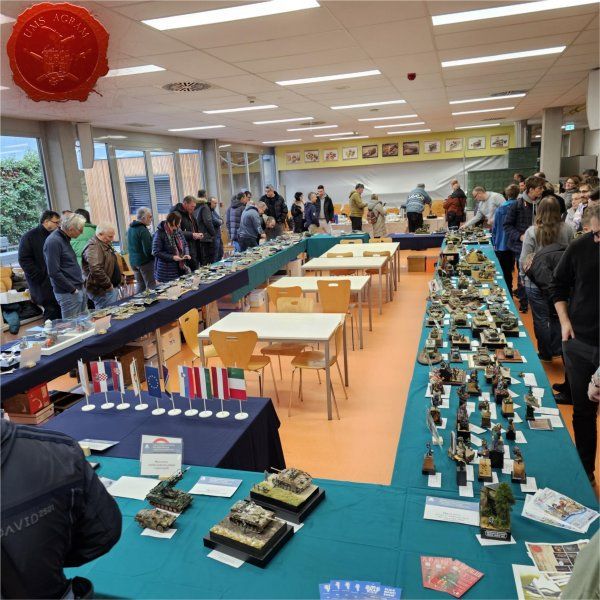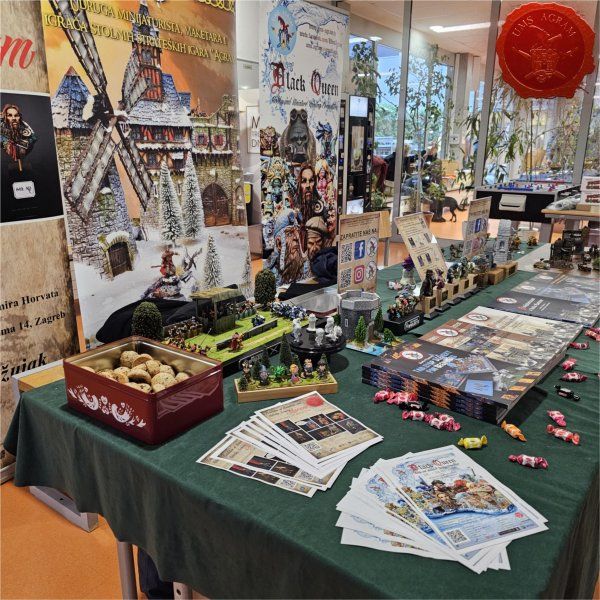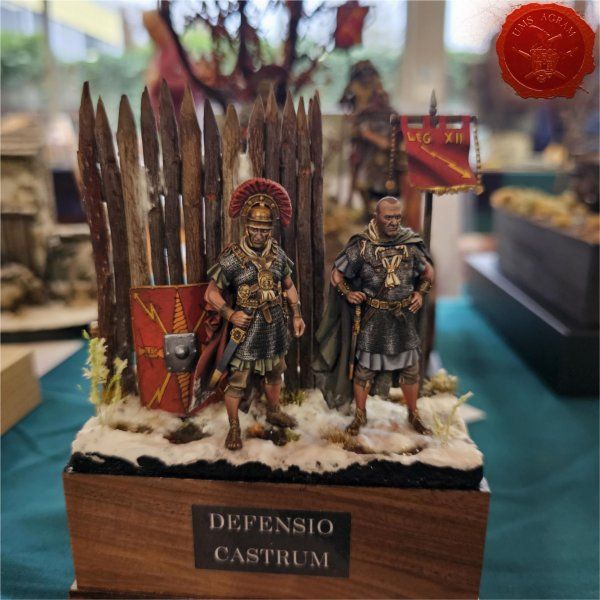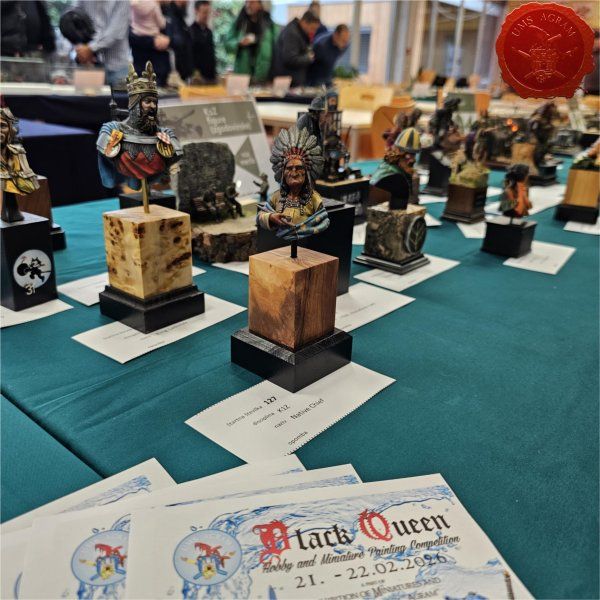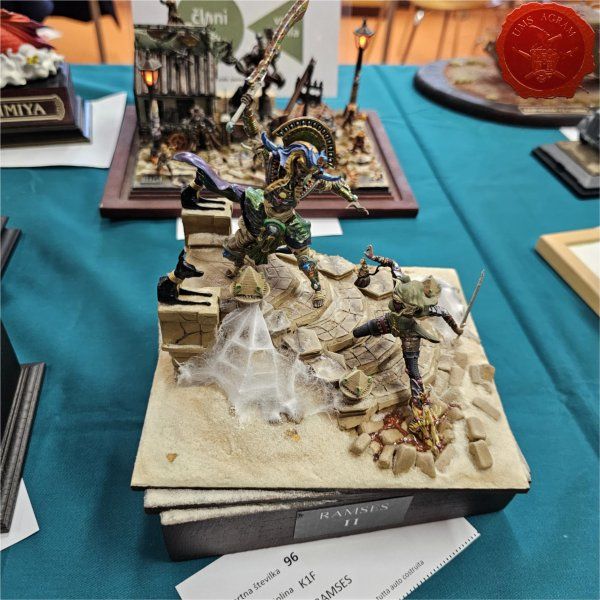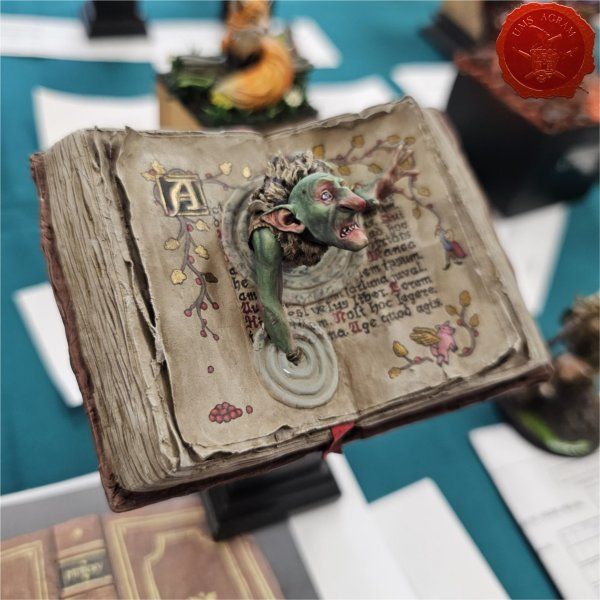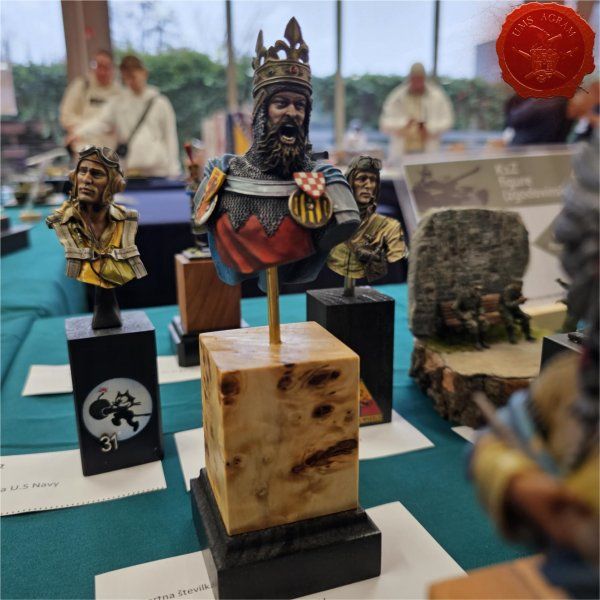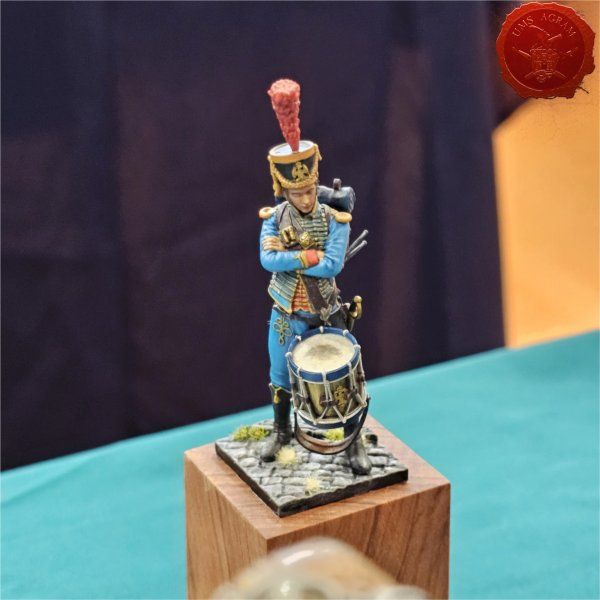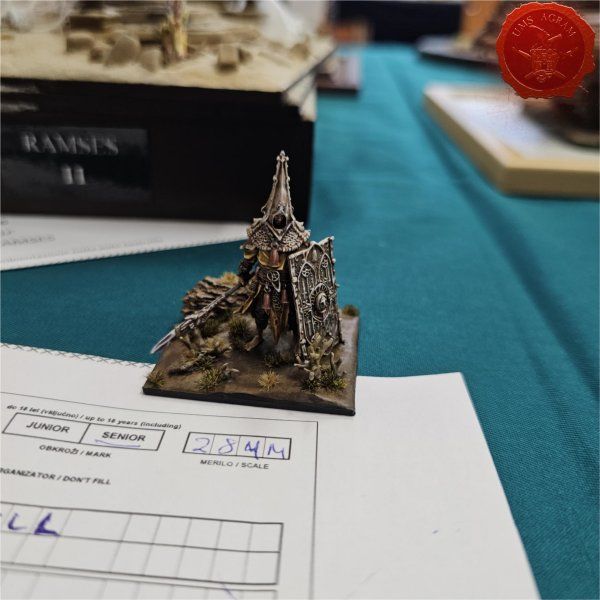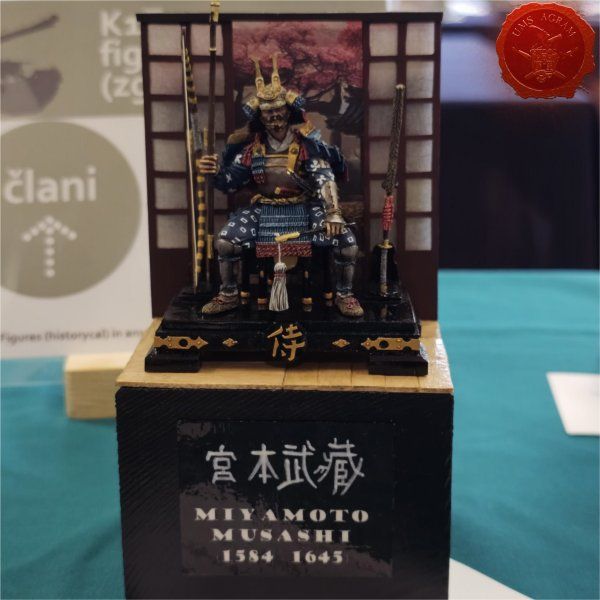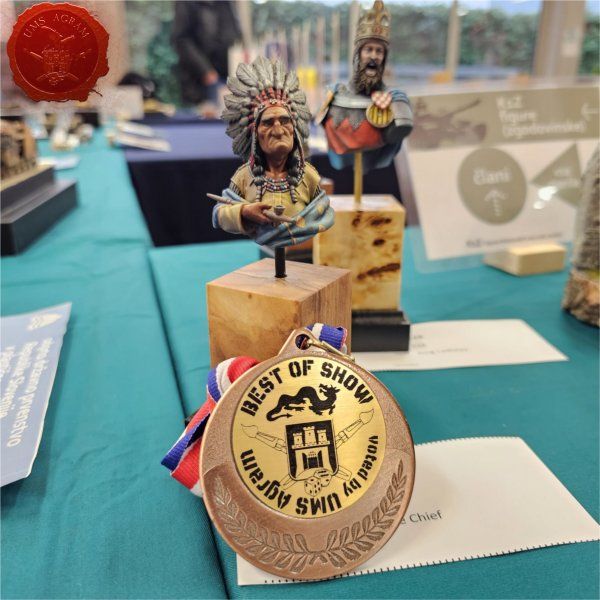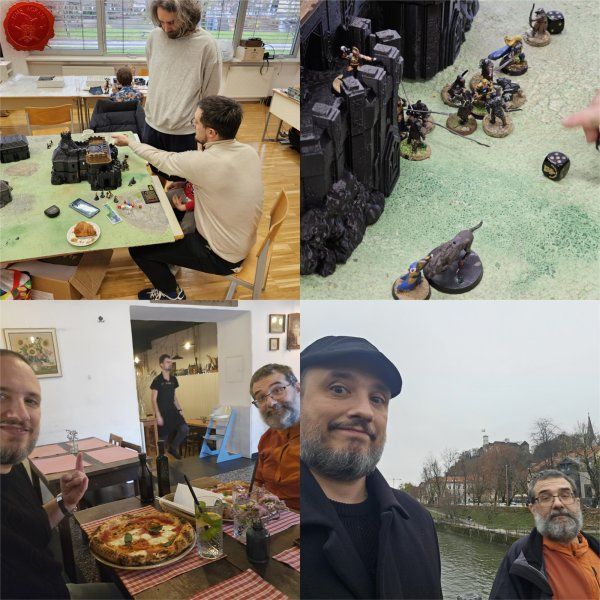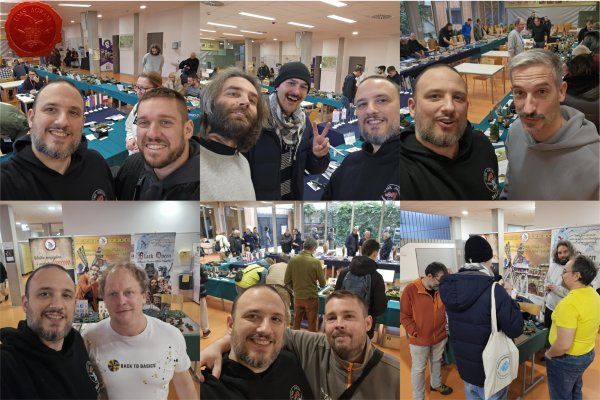Obavijesti
Zimsko ferje u Agramu
12.12.2025., objavio Krunoslav Belinić u Obavijestima iz radionicePozviamo vas na Zimsko ferje u Agramu!
Radnim danima od 30.12.2025. - 9.1.2026. u terminu od 10:00 do 14:00h na starom mjestu, u Kino dvorani ZZTK na Trgu žrtava fašizma 14.
UPAD ZA SVE JE BESPLATAN!
U sklopu Zimskog ferja organiziramo nekoliko radionica. Svaki dan od 11:00 do 12:00 rezerviran je za Back to Basics radionice za najmlađe u kojima naši najmlađi korisnici mogu naučiti bojati minijature na našim Agramerima. Zbog ograničenog mjesta, za svaki termin potrebna je rezervacija na ums.agram@gmail.com.
Pored toga, za starije, nudimo Radionice bojanja minijatura za početnike. Dođite, obojajte svoju prvu figuru. Nudimo vam predivne figure koje smo dobili od ekipe iz Fireball Figurines, a ostatak materijala, alata, kistova i boja osigurala je Carta Magica!
Pored toga, možete i slobodno igrati stolne strateške igre, a za članove tu je i Agram Group Build koji će za ovu priliku biti baziran na izradi tabli za Leaving Asphodel kampanju Necropolis 28.
...Pročitaj više o "Zimsko ferje u Agramu"AGRAM ARENA 2026 - Leaving Asphodel - Kampanja u stolnoj strateškoj igri Necropolis
Datum događaja: 21.02.2026., 08:00h - 22.02.2026., 06:00h 19.11.2025., objavio Antoni Pastuović u Najavama i reportažama događanjaDragi prijatelji, igrači, minijaturisti i prijatelji hobija općenito!
Pozivamo vas na našu sljedeću AGRAM ARENU 2026:
LEAVING ASPHODEL - dvodnevna kampanja u stolnoj strateškoj igri Necropolis
BESPLATAN ULAZ!!
ONLINE REGISTRACIJE
Registrirajte se putem e-pošte na ums.agram@gmail.com s naslovom „NECROPOLIS“. Prijava treba sadržavati: ime, kontakt podatke (broj telefona/e-poštu) i planirate li donijeti ploču Nekropole na događaj (neobvezujuće, ali će biti dodijeljene pogodnosti). Svaka osoba mora poslati vlastitu online registraciju.
Napomena: Ako sudjelujete i na Black Queen H&MPC-u, možete se registrirati jednom e-poštom s naslovom „Black Queen i Necropolis“.
Registracije za Necropolisu na događaju počinju u 11:00 i završavaju u 11:30.
Međutim, ako ste se registrirali i za Black Queen - pravila za registraciju za BQ i dalje vrijede.
ULAZ za online registrirane sudionike je besplatan.
ULAZ za one koji se nisu registrirali online iznosi ...
Pročitaj više o "AGRAM ARENA 2026 - Leaving Asphodel - Kampanja u stolnoj strateškoj igri Necropolis"Black Queen Hobby and Miniature Painting Competition 2026
Datum događaja: 21.02.2026., 08:00h - 22.02.2026., 18:00h 19.11.2025., objavio Marko Paunović u Najavama i reportažama događanjaDragi prijatelji, minijaturisti i općenito prijatelji hobija!
Pozivamo vas na naše 20. godišnje natjecanje u bojanju minijatura Black Queen Hobby and Miniature Painting Competition!
BESPLATAN ULAZ!
U 2026., imamo neke promjene u formatu natjecanja. Dakle, što je novo, a što ostaje isto?
Prvo, ponovno će se održavati tijekom dva dana.
Drugo, bit će opet dio većeg događaja u organizaciji @UMS Agram - Izložbe minijatura i stolnih terena „Agram“.
Treće, dodatna zaštita za vaše izloške u našim staklenim vitrinama.
Četvrto, šest jednosatnih radionica bojanja minijatura (tri dnevno).
Peto, nekoliko izmjena u kategorijama natjecanja.
Šesto, u nedjelju će se organizirati natjecanje u brzom bojanju minijatura. Jedan sat za bojanje minijature.
Najveća promjena u formatu bit će postupak registracije. Razdoblje online registracije za Black Queen 2026. počinje objavom ovih pravila. Online prijave otvorene su do 15. veljače!
...Pročitaj više o "Black Queen Hobby and Miniature Painting Competition 2026"UMS Agram na Državnom prvenstvu Slovenije 2025 u Ljubljani
Datum događaja: 22.11.2025., 10:00h - 22.11.2025., 16:00h 10.11.2025., objavio Domagoj Krpan u Najavama i reportažama događanjaU subotu 22.11.2025. u Ljubljani se održava 30. otvoreno državno prvenstvo Republike Slovenije u plastičnom maketarstvu. UMS Agram nastupa s prezentacijom rada naših raznih programa poput Izložba minijatura i maketa Agram, Black Queen Hobby and Miniature Painting Competition, Back To Basics radionice, Agram Group Build te Knjižnica i čitaonica UMS "Agram".
Vidimo se!
Fireball Figurines - naš novi sponzor
28.10.2025., objavio Domagoj Krpan u NovostimaU UMS "Agram"-u smo ponosni da Vam možemo predstaviti Fireball Figurines, našeg novog sponzora.
Fireball Figurines je hrvatska tvrtka koja dizajnira i prodaje 3D printane figurice za igre poput Dungeons & Dragons, ali i za ostale tabletop igre. Ovaj ''projekt'' je započeo iz ljubavi prema druženjima uz igre i kreativnosti, što je na kraju pretvorilo hobi u profesionalno poduzeće.
Advent u Agramu 2025
Datum događaja: 19.11.2025., 18:00h - 17.12.2025., 21:52h 06.10.2025., objavio Krunoslav Belinić u Najavama i reportažama događanjaPozdrav iz UMS "Agram"
vrijeme je za najavu našeg programa Advent u Agramu u kojem srijedama održavamo nekoliko radionica. U studenom počinjemo sa Radionicom prostornih maketa – izrada Božićne kuglice - Hobitska rupa. U prosincu ćemo imati i uvijek popularnu radionicu fotografiranja minijatura. A Advent u Agramu završavamo Buvljakom (za sve) i Secret Santom (za članove) i Božićnom zabavom.
Radionica prostornih maketa – izrada Božićne kuglice - Hobitska rupa
Broj polaznika: 10
Vrijeme održavanja: 19.11., 26.11., 03.12. i 10.12. 18:00 do cca 21:00h
Sadržaj: kroz 4 termina polaznici će se upoznati sa tehnikama, materijalima i alatima u maketarstvu tijekom izrade kuglice za bor u obliku hobitske rupe koju polaznici po završetku radionice zadržavaju.
1. termin - izrada i modeliranje osnovnih oblika kućice
2. termin - izrada i dodavanje detalja
3. termin - bojanje
4. termin - dodavanje vegetacije
Cijena: 30,00 € za 4 termina (svi materijali, minija...
Najnoviji članci
-
Advent u Agramu 2025
array(2) { ["Article"]=> array(10) { ["id"]=> string(3) "487" ["member_id"]=> string(2) "35" ["title_eng"]=> string(20) "Advent in Agram 2025" ["title_hrv"]=> string(20) "Advent u Agramu 2025" ["mask_eng"]=> string(20) "advent_in_agram_2025" ["mask_hrv"]=> string(20) "advent_u_agramu_2025" ["content_eng"]=> string(2568) "Marko Paunović, 18.12.2025.During November and December we organized Advent in Agram. The Advent consisted of several fun events.
Terrain Workshop - Hobbiton Xmass decorations
Miniature Photography Course
Figurines and Bits Flea Market
Secret Santa
And it all ended with a Christmas party
" ["content_hrv"]=> string(2619) "Tijekom studenog i prosinca organizirali smo Advent u Agramu. Advent se sastojao od nekoliko zabavnih događaja.
Radionica izrade prostornih maketa - izrada božićne kuglice u obliku hobitske rupe.
Tečaj fotografiranja minijatura
Buvljak figura i bitsa
Secret Santa
I sve je završilo božićnom zabavom!
" ["created"]=> string(19) "2025-12-18 08:55:50" ["modified"]=> string(19) "2025-12-18 08:55:50" } ["Member"]=> array(10) { ["id"]=> string(2) "35" ["group_id"]=> string(1) "1" ["first_name"]=> string(5) "Marko" ["last_name"]=> string(9) "Paunović" ["first_name_mask"]=> string(5) "marko" ["last_name_mask"]=> string(8) "paunovic" ["username"]=> string(5) "marko" ["password"]=> string(40) "3bd37b326d19d1880d3b93a4b32e8fb3a90fa122" ["born"]=> string(19) "2033-03-07 20:35:00" ["created"]=> string(19) "2009-06-02 20:37:03" } } -
Agram u 2025. iliti 2025. u Agramu
array(2) { ["Article"]=> array(10) { ["id"]=> string(3) "486" ["member_id"]=> string(2) "35" ["title_eng"]=> string(31) "Agram 2025 – A Year In Review" ["title_hrv"]=> string(34) "Agram u 2025. iliti 2025. u Agramu" ["mask_eng"]=> string(27) "agram_2025_a_year_in_review" ["mask_hrv"]=> string(32) "agram_u_2025_iliti_2025_u_agramu" ["content_eng"]=> string(52755) "Marko Paunović, 18.12.2025.The year 2025 has also come to an end, in which, in addition to the traditional programs, we created a series of our own miniatures for the first time, published the first book in English, and also made our own miniatures for awards for our Black Queen in 2026! In cooperation with Algebra Bernays University, two of their students, Jana Pahel and Monika Bešenić, designed Agramer figures according to our design, which we already used this year in our Back to Basics workshops. In addition to these miniatures, for the needs of our miniature painting competition, Black Queen H&MPC also created a bust and a 75mm and 120mm miniature of Barbara Celjska, known in these parts as the Black Queen. Read about all that below.
A G R A M E R S
In September, at the Days of Technical Culture, we presented our Agrameri miniature line for the first time. It consists of six miniatures depicting a dragon, a knight, a barbarian, a princess, a king and a wizard..
But let's go back to the beginning of the year, which, like every year, began with our traditional Exhibition...
E X H I B I T I O N O F M I N I A T U R E S A N D T A B L E T O P S C E N E R Y A G R A M 2 0 2 5
We started the year with preparations for our annual Exhibition of Miniatures and Tabletop Scenery, during which we also organized a weekend miniature painting workshop and, for the fifth time this term, our international miniature painting competition, the Black Queen Hobby and Miniature Painting Competition..
The Exhibition of Miniatures and Tabletop Scenery "Agram 2025" took place this year from 20.2. to 9.03. The exhibition was set up on Wednesday 19.2. in the afternoon and was attended by a large number of members and friends of the Association who exhibited their works.
As always, the Exhibition presented a cross-section of the work of the Association, its members, participants of its courses and workshops, and members of the Miniature Painters Croatia FB group. A large number of showcases contained numerous miniatures for tabletop strategy games, board games, and an entire showcase was dedicated to award-winning exhibits from previous miniature competitions. Several showcases were dedicated to projects that the Association has been implementing for 21 years, such as the UMS “Agram” Library and Reading Room, the Workshop for Making Spatial Models, and the Miniature Painting Workshop.
During the first weekend of the Exhibition, 22-23 February, we held the 19th annual international miniature painting competition, the Black Queen Hobby and Miniature Painting Competition. !
As contestants arrived and registered for the competition, our hardworking staff photographed all the exhibits before sorting them into categories and carefully placing them in glass cases.
WARGAMING DEMO GAMES
This year, organized by our friends from Slovenia from the Amulet D20 club, demonstrations of the tabletop strategy game Turnip28 were held. Over the course of both days, a handful of games were played on beautiful terrain!
SALE CORNER
During the weekend we hosted our sponsors with their sales stands: Swood.si and Carta Magica.
MINIATURE PAINTING DEMONSTRATIONS
The ZZTK space allows workshops to be held during the weekend in the cinema hall in the basement, so we also organized demonstration workshops during the weekend. The work of the lecturers was recorded with a camera and projected onto the projection screen in the hall. Many thanks to our domestic and foreign lecturers: Ana Polanšćak (CRO), Vladimir Matić-Kuriljev (SRB), Luka Jaret and Vanet Dolenc (SLO), doc.dr.sc. Winton Afrić (CRO) and Marcello Rizza (I).
SPEED PAINTING CONTEST
On Sunday afternoon, a miniature speed painting competition was held. Participants had 90 minutes to paint one miniature. Thanks to our sponsor Hobby Chest, who provided us with a large donation of painting materials from AK Interactive, we organized a miniature speed painting competition according to the following rules:
- competitors have 90 minutes to paint a miniature
- all competitors paint the same (same type) miniature
- we provided paints from AK Interactive
- we provided brushes from AK Interactive.
With that, we came to the very end of this wonderful weekend and all that remained was the distribution of prizes and awards to the winners.
BACK TO BASICS WORKSHOPS FOR KIDS
On weekdays from 17:00 to 18:00 we held our new workshops for the youngest, in which our youngest participants painted their first miniatures..
OPEN MINIATURE PAINTING WORKSHOPS
Over the next two weeks, our volunteers held open miniature painting workshops on weekdays from 4:00 PM to 8:00 PM. Miniature painting workstations were set up where our visitors could paint miniatures we had prepared (or their own if they had brought them) using our materials and tools.
U srijedu 05.03.2025. održana je godišnja sjednica Skupštine na kojoj smo odredili smjernice rada u 2025..
W E E K E N D M I N I A T U R E P A I N T I N G W O R K S H O P S
During the second weekend of the Exhibition, March 1-2, we organized a MINITURE PAINTING WORKSHOP – Frostgrave.
The workshop was held over two days (the whole weekend) and participants painted five different figures for the Frostgrave game, which can also be used for DND sessions. The focus of these lectures was painting several miniatures at once, but the knowledge from the workshop is equally applicable to painting armies for boardgames and a collection of figures for pen&paper rpgs. The workshop presented paints and accessories, preparation of figures, several techniques for coloring miniatures from basic to more advanced, and techniques and tricks for quickly and efficiently coloring large quantities of figures at once. As part of the workshop, water-based acrylic paints were used.
During the weekend, 17-18.05., we organized a MINITURE PAINTING WORKSHOP – Kitbashing and Converting.
The workshop was conducted over two days (a whole weekend) and focused on making two (up to three) of their own miniatures from various parts (several different miniatures) with the addition of modeling the parts using modeling clay (Green Stuff). It consisted of two parts, a theoretical and a practical part. During the workshop, participants were introduced to tools, materials and techniques for performing simple and complex conversions, including the use of modeling putties.
Over the weekend, September 13-14, 2025, we held a new weekend miniature painting workshop called Contrast paints.
The workshop was held over two days (the whole weekend) and participants colored several (2-3) different figures using Contrast colors for quick coloring of miniatures. The focus of these lectures was coloring several miniatures at once, but the knowledge from the workshop is equally applicable to coloring armies for boardgames and a collection of figures for pen&paper rpgs. Each participant put together two to three figures from our collection, but for the first time they were also able to bring their own figures to work on. The workshop presented paints and accessories, preparation of figures, several techniques for coloring miniatures from basic to more advanced, and techniques and tricks for quickly and efficiently coloring large quantities of figures at once. As part of the workshop, water-based acrylic paints were used, with special attention paid to Contrast paints. The lectures were adjusted so that the presenters could devote equal time to all participants and could be adapted to all categories of miniaturists (from beginners to slightly advanced).
B A C K T O B A S I C S Miniature painting workshops for kids
During October and November, we held our Back to Basics miniature painting workshops for the youngest at the Zagreb City Libraries. We held a total of six workshops during October and November. And in combination with the Association's appearances at various events throughout 2025, a total of 100 participants, our youngest fellow citizens, went through the B2B workshop program..
A G R A M L E G O S E C T I O N
As part of our Agram Lego Section, we have been organizing a series of expert lectures related to our current group LEGO project since 2024. Our experts lead lectures in various fields such as architecture, mechanical engineering, naval architecture, sculpture, etc. In 2025, we covered two topics: Leonardo da Vinci – the inventor and the Orient Express.
In February, our Mario Grgurev covered the topic of inventor Leonardo da Vinci as part of the construction of his flying machine.
In April, our engineers held a series of lectures about the Orient Express, steam engines and locomotives as part of the construction of a model of this most famous train in the world.
A G R A M G R O U P B U I L D
As part of this UMS "Agram" project called Agram Group Build, which was created after Kruno and Marko discussed joint projects on Wednesdays and how it would be cool to gather more people on Wednesdays to work on something together. From this, the idea of Group Builds was born. In 2025, we worked on a series of busts on the theme of Iron Maiden and on the creation of a dieselpunk diorama of a flying island.
H O B B Y C O R N E R O N W E D N E S D A Y S
Hobby Corner on Wednesdays is conceived as a collection of free activities in the space used by UMS "Agram" during Wednesday evening sessions. Most activities are open to everyone, with some benefits for UMS "Agram" members, such as storing miniatures in display cases between sessions or borrowing books from our extensive Library.
A D V E N T I N A G R A M
During November and December, we organized a program called Advent in Agram, which consisted of interactive workshops on making Christmas balls and shorter demonstration workshops during December. Interactive workshops involve participants making their own models according to instructions and under the supervision of a leader. No registration is required for the demonstration workshops in December, and they consist of a series of separate topics that cover model-making methods, effects, and materials related to the winter period, such as making snow, ice, and the like, which the lecturer demonstrates from behind the desk.
Miniature photography course
10.12. as part of Advent in Agram, a miniature photography course was held, in which the lecturer showed how to photograph miniatures and how to make all miniatures sharp.
Secret Santa
Miniatures Fleamarket
P E R F O R M A N C E S AT C O M P E T I T I O N S, C O N V E N T I O N S, E X H I B I T I O N S A N D O T H E R E V E N T S
All A Bord, Nedelišće
Our Mario, a veteran of the battlefields of Međimurje, led another Back to Basics coloring workshop. This time, at All A-Board vol.2 DDI - Social Games Days in Nedelišće on Saturday, March 15th.
Sferakon, Zagreb
This year, UMS "Agram" organized interactive Back to Basics miniature painting workshops at its stand on Saturday, May 10th, adapted for all ages (from 8-99). The workshops for up to three participants last an hour..
H.R.E.N.28, Medvode, Slovenia
Our delegation participated in the international invitational event H.r.e.n.28 organized by our friends from AmuletD20.
14. Days of Technical Culture, Zagreb
On September 19th and 20th, we performed at the 14th Days of Technical Culture at the Dubrava Cultural Center. The days were organized by the Zagreb Technical Culture Association..
As part of the performance, we organized: - introducing Agramer, a line of chibi miniatures - promotion of the book Tabletop Scenery for Beginners
And we are proud to announce that we received the Dr. Oton Kučera Annual Technical Culture Award for our work in 2024.
We also organized free: - demonstrations of miniaturist techniques - sculpting and painting miniatures on Friday - Back to Basics miniature painting workshops for the youngest on Saturday
Modelmania, Zagreb
On Saturday, October 25, 2025, the Photo Video Show & ModelMania Zagreb took place in the Congress Hall at the Zagreb Fair. UMS Agram performed with a presentation of the work of our various programs such as Advent in Agram, Agram Group Build, Agram Lego Section and the UMS "Agram" Library and Reading Room.
Our volunteers, Kruno and Marko were there from 10am answering questions about what we do. Antoni and Lav were in charge of demonstrating the tabletop strategy game Gaslands! Kruno held a Back to Basics miniature painting workshop!
State Championship of Slovenia in plastic modeling, Ljubljana, Slovenia
On Saturday, November 22, 2025. in Ljubljana, the National Championship of Slovenia in Plastic Modeling was held, jubilee, 30. On this occasion, our delegation performed in several categories, but also for the first time with a presentation stand.
Museum Slovenija v Malem, Šenčur/Kranj, Slovenij
After the performance at the National Championship in Ljubljana, our team went on a trip to Kranj on Sunday morning at the invitation of our partners from Back to Basics! First we visited the Svet v Malem museum in Šenčur and then the headquarters of Back to Basics in Kranj.
During the visit, we were presented with a commemorative plaque on the occasion of the hundredth participant in our Back to Basics workshops during 2025.
After that, we visited the B2B headquarters at the Kovačnica incubator in Kranj, where we discussed the state of technical culture in both Slovenia and Croatia over coffee.
V I S I T S T O E X H I B I T I O N S, C O M P E T I T I O N S A N D O T H E R E V E N T S
Mosonshow, Mosonmagyarovar, Hungary
In April, our Marko Paunović, at the invitation of the organizers, was one of the judges at the prestigious international competition Mosonshow.
Eurotrack 2025, Zagreb
On Friday, May 10, our exhibition delegation visited the largest model train exhibition in Croatia, called Eurotrack 2025.
Kontrast, Warsaw, Poland
One of the largest miniature painting competitions in the world has been taking place in Warsaw since 2021. The Knezović clan visited Kontrast for the first time in 2023. The event was great and they enjoyed almost 1500 works, many of which were made by masters at the highest artistic level.
Our results were beyond expectations. Petar did not return with a medal, because for 2 years he worked mostly on orders. Jure Cukar, for whom we wore 3 models, won 1 silver in the Standard class. Filip won 2 silvers in the Standard class for his lizards (diorama) and for his environmental soldier (single model up to 54 mm). Ivan won gold in the Standard Historical and Realism category and the Alternity Miniatures award, silver in the Standard Storytelling category, gold in the Standard category for models larger than 54 millimeters and gold in the Standard Diorama category, the medal of Verko's Vault (miniature museum in Las Vegas) and what I really did not expect, the Best of Standard - award for the best work of all works in the Standard category. In addition, he also won a silver medal in the Master category.
Svet v Malem, Pivka, Slovenia
On Saturday, May 24, 2025, we headed to Pivka, Slovenia, for the traditional international competition Svet v Malem. As in previous years, this time it was held in the Military History Park in Pivka, located in a former military barracks.
Mastery in Scale, Samobor
On Tuesday, July 15th, we visited the opening of the exhibition of ships and other models by Marijan Majdak, entitled Mastery in Scale.
CK 2025, Stubičke Toplice
On Saturday, September 27, 2025, our members performed at CK2025 in Stubičke Toplice.
Amulet D20 Grand Tournament, Ljubljana, Slovenia
In early October, our Domagoj had the opportunity to visit his neighbors from the Amuletd20 association. This time it wasn't an artsy Turnip28 event, but a huge tournament in AOS and Conquest games.
Monte San Savino Show, Monte San Savino, Italija
A small town in Italy has hosted one of the largest and most prestigious miniature exhibitions in the world every year since 2006, bringing together miniaturists from all over the world. The Knezović clan decided it was a shame that Croatians didn't come to the Monte San Savino Show, so after having a great time at Kontrast, a miniature exhibition in Warsaw, they decided to visit Italy as well.
Kup Zagreb, Zagreb
On Saturday, December 6th, our members competed in the 20th Zagreb Cup. The competition was held at the Juraj Kaštelan Elementary School in Zagreb.
Modelling Articles
And finally, our most comprehensive program should be mentioned. The online publication of articles from miniatures and model making that started in 2020 continued in the following years and even in 2025 with over 50 published articles this year. We would like to thank all members for their hard work and dedication in making miniatures and models, but especially for taking time to photograph work in progress and writing articles for our site.
A B O O K P U B L I S H E D B Y U M S „A G R A M“
In 2025, we published the first publication in English: Tabletop Scenery for Beginners by Marko Paunović.
UMS "Agram" wishes you all the best in the new year 2026! See you next year!
" ["content_hrv"]=> string(52683) "Došao je kraj i ovoj 2025. godini u kojoj smo pored tradicionalnih programa po prvi puta izradili i seriju vlastitih minijatura, izdali prvu knjigu na engleskom jeziku, ali i napravili vlastite minijature za nagrade za naš Black Queen 2026.! U suradnji sa sveučilištem Algebra Bernays, dvije njihove studentice, Jana Pahel i Monika Bešenić su prema našem dizajnu dizajnirale figure Agramera koje smo već ove godine koristili u našim Back to Basics radionicama. Pored tih minijatura, za potrebe našeg natjecanja u bojanju minijatura, Black Queen H&MPC, izradile su i bistu te 75mm i 120mm minijaturu Barbare Celjske, u ovim krajevima poznatu pod imenom Crna Kraljica. O svemu tome, pročitajte u nastavku.
A G R A M E R I
U rujnu na Danima tehničke kulture po prvi puta smo predstavili našu liniju minijatura Agrameri. Sastoji se od šest minijatura koje prikazuju zmaja, viteza, barbarina, princezu, kralja i čarobnjaka.
No vratimo se na početak godine, koji je kao i svaki puta započeo sa našom tradicionalnom Izložbom...
I Z L O Ž B A M I N I J A T U R A I M A K E T A A G R A M 2 0 2 5
Godinu smo započeli pripremama za našu godišnju Izložbu minijatura i maketa tijekom koje smo organizirali i vikend radionicu bojanja minijatura te po peti puta u ovom terminu naše međunarodno natjecanje u bojanju minijatura Black Queen Hobby and Miniature Painting Competition.
Izložba minijatura i maketa "Agram 2025" održala se ove godine od 20.2. do 9.03. Postavljanje izložbe je održano u srijedu 19.2. u popodnevnim satima i sudjelovao je velik broj članova kao i prijatelja Udruge koji su izlagali svoje radove.
Kao i uvijek, Izložba je prikazivala presjek rada Udruge, njenih članova, polaznika njenih tečajeva i radionica te članova FB grupe Miniature Painters Croatia. U velikom broju vitrina našle su se brojne minijature za stolne strateške igre, igre na tabli, a cijela jedna vitrina posvećena je nagrađenim izlošcima sa prethodnih minijaturističkih natjecanja. Nekoliko vitrina bilo je posvećeno projektima koje Udruga već 21 godinu provodi poput Knjižnice i čitaonice UMS „Agram“, Radionice za izradu prostornih maketa i Radionice bojanja minijatura.
Tijekom prvog vikenda Izložbe, 22.-23.02.,održali smo 19. godišnje međunarodno natjecanje u bojanju minijatura Black Queen Hobby and Miniature Painting Competition!
Kako su natjecatelji pristizali i prijavljivali se na natjecanje, naše vrijedno osoblje je fotografiralo sve izloške prije nego li su ih rasporedili po kategorijama i pažljivo ih postavili u staklene vitrine.
WARGAMING POKAZNE PARTIJE
Ove godine u organizaciji naših prijatelja iz Slovenije iz kluba Amulet D20 održane su demonstracije stolne strateške igre Turnip28. Tijekom oba dana odigran je pregršt partija na predivnim terenima!
PRODAJNI KUTAK
Tijekom vikenda ugostili smo naše sponzore sa njihovim prodajnim štandovima: Swood.si i Carta Magica.
OGLEDNE RADIONICE BOJANJA MINIJATURA
Prostor ZZTK omogućuje održavanje radionica tijekom vikenda u kino dvorani u podrumu, stoga smo tijekom vikenda organizirali i ogledne radionice. Rad predavača snimao se kamerom i projicirao na projekcijsko platno u dvorani. Veliko hvala našim domaćim i inozemnim predavačima: Ani Polanšćak (HR), Vladimiru Matić-Kuriljevu (SRB), Luki Jaretu i Vanetu Dolencu (SLO), doc.dr.sc. Wintonu Afriću (HR) i Marcellu Rizzi (I).
NATJECANJE U BRZOM BOJANJU MINIJATURA
U nedjelju popodne održano je i natjecanje u brzom bojanju minijatura. Sudionici su imali 90 minuta vremena da obojaju jednu minijaturu. Zahvaljujući našem sponzoru Hobby Chest, koji nam je osigurao veliku donaciju materijala za bojanje od AK Interactive, organizirali smo jedno natjecanje u brzom bojanju minijatura prema sljedećim pravilima:
- natjecatelji imaju 90 minuta da oboje minijaturu
- svi natjecatelji bojaju istu (isti tip) minijaturu
- osigurali smo boje od AK Interactive
- osigurali smo kistove od AK Interactive.
S time smo došli do samoga kraja ovog predivnog vikenda i sve što je preostalo je bila podjela nagrada i priznanja pobjednicima.
BACK TO BASICS RADIONICE ZA NAJMLAĐE
Radnim danima od 17:00 do 18:00 održavali smo naše nove radionice za najmlađe u kojima su naši najmlađi polaznici bojali svoje prve minijature.
OTVORENE RADIONICE BOJANJA MINIJATURA
Tijekom naredna dva tjedna, naši volonteri su radnim danima od 16:00 do 20:00, držali otvorene radionice bojanja minijatura. Postavljene su radne stanice za bojanje minijatura na kojoj su naši posjetitelji mogli bojati minijature koje smo priredili (ili svoje ukoliko su ih donijeli) koristeći naše materijale i alate.
U srijedu 05.03.2025. održana je godišnja sjednica Skupštine na kojoj smo odredili smjernice rada u 2025..
V I K E N D R A D I O N I C E B O J A NJ A M I N I J A T U R A
Tijekom drugog vikenda Izložbe, 01.-02.03., organizirali smo RADIONICU BOJANJA MINIJATURA – Frostgrave.
Radionica se provodila kroz dva dana (cijeli vikend) i polaznici su bojali pet različitih figura za igru Frostgrave, a koje se mogu koristiti i za DND sessione. Fokus ovih predavanja bilo jebojenje više minijatura odjednom, no znanja s radionice jednako su primjenjiva i na bojenje vojski za boardgame igre te kolekcija figura za pen&paper rpg-ove. Na radionici su bile predstavljene boje i pribor, priprema figura, nekoliko tehnika bojenja minijatura od osnovnih do naprednijih, te tehnike i trikovi za brzo i efikasno bojenje većih količina figura odjednom. U sklopu radionice korištene su akrilne boje na bazi vode.
Tijekom vikenda, 17.-18.05., organizirali smo RADIONICU BOJANJA MINIJATURA – Kitbashing and Converting.
Radionica se provodila kroz dva dana (cijeli vikend) i bila je fokusirana na izradu dvije (do tri) vlastite minijature od raznih dijelova (više različitih minijatura) uz dodatak modeliranja dijelova uz pomoć modelarskih masa (Green Stuff). Sastojala se od dva dijela, teorijskog i praktičnog dijela. Tijekom radionice polaznici su se upoznali s alatima, materijalima i tehnikama za izvođenje jednostavnih i kompleksnih konverzija, uključujući uporabu masa za modeliranje.
Tijekom vikenda, 13.-14.9.2025., održali smo novu vikend radionicu bojanja minijatura pod nazivom Kontrastice.
Radionica se provodila kroz dva dana (cijeli vikend) i polaznici su bojili nekoliko (2-3) različitih figura koristeći Contrast boje za brzo bojanje minijatura. Fokus ovih predavanja bio je bojenje više minijatura odjednom, no znanja s radionice jednako su primjenjiva i na bojenje vojski za boardgame igre te kolekcija figura za pen&paper rpg-ove. Svaki polaznik je složio dvije do tri figure iz našeg fundusa, ali po prvi puta im je omogućeno i donođšenje vlastitih figura za rad na njima. Na radionici su bile predstavljene boje i pribor, priprema figura, nekoliko tehnika bojenja minijatura od osnovnih do naprednijih, te tehnike i trikovi za brzo i efikasno bojenje većih količina figura odjednom. U sklopu radionice bile su korištene akrilne boje na bazi vode s posebnom pažnjom posvećenom Contrast bojama. Predavanja su bila prilagođena tako da je voditelji posvetiti jednako vrijeme svim polaznicima i mogao se prilagoditi svim kategorijama minijaturista (od početnika do malo naprednijih).
B A C K T O B A S I C S Radionice za najmlađe
Tijekom listopada i studenog u Knjižnicama Grada Zagreba smo održali naše Back to Basics radionice bojanja minijatura za najmlađe. Ukupno smo održali šest radionice tijekom listopada i studenog. A u kombinaciji sa nastupima Udruge na raznim događanjima tijekom 2025., sveukupno je kroz program B2B radionica prošlo 100 polaznika, naših najmlađih sugrađana.
A G R A M L E G O S E K C I J A
Kao dio naše Agram Lego Sekcije, od 2024. organiziramo serije stručnih predavanja vezanih na naš trenutni grupni LEGO projekt. Naši stručnjaci vode predavanja iz raznih područja poput arhitekture, strojarstva, brodogradnje, kiparstva i slično. U 2025. smo obradili dvije teme: Leonardo da Vinci – izumitelj te Orient Express.
U veljači je naš Mario Grgurev obradio temu izumitelja Leonarda da Vincija u sklopu izgradnje njegovog letećeg stroja.
U travnju su naši strojari održali niz predavanja o Orient Expressu te parnim strojevima i lokomotivama u sklopu izgradnje makete ovog najpoznatijeg vlaka na svijetu.
A G R A M G R O U P B U I L D
U sklopu ovog projekta UMS „Agram” pod nazivom Agram Group Build koji je nastao nakon što su Kruno i Marko srijedama razgovarali o zajedničkim projektima i kako bi bilo cool okupiti više ljudi srijedama oko rada na zajedničkom nečemu. Iz toga se izrodila ideja o Group Buildovima. U 2025. smo radili na seriji bisti na temu Iron Maiden te na izradi dieselpunk diorame letećeg otoka.
H O B B Y K U T A K S R I J E D O M
Hobby Kutak Srijedom je zamišljen kao suma besplatnih aktivnosti u prostoru kojeg koristi UMS „Agram” u terminima srijedom navečer. Većina aktivnosti je otvorena za sve, uz neke pogodnosti za članove UMS „Agram” poput skladištenja minijatura u vitrinama između termina ili pak posuđivanje knjiga iz naše bogate Knjižnice.
A D V E N T U A G R A M U
Tijekom studenog i prosinca organizirali smo program pod nazivom Advent u Agramu koji se sastojao od interaktivnih radionica izrade božićnih kuglica te kraćih oglednih radionica tijekom prosinca. Interaktivne radionice podrazumijevaju da polaznici izrađuju vlastite makete prema uputama i pod paskom voditelja. Za ogledne radionice u prosincu nisu potrebne prijave, a sastoje se od niza zasebnih tema koje obrađuju maketarske metode, efekte i materijale koji su vezani za zimski period poput izrade snijega, leda i sličnog koje predavač pokazuje za katedrom.
Tečaj fotografiranja minijatura
10.12. u sklopu Adventa u Agramu održan je i tečaj fotografiranja minijatura u kojemu je predavač pokazao kako fotografirati minijature i kako učiniti da sve minijature budu oštre.
Secret Santa
Buvljak minijatura i bitseva
N A S T U P I N A N A T J E C A NJ I M A, K O N V E N C I J A M A, I Z L O Ž B A M A I D R U G I M D O G A Đ A NJ I M A
All A Bord, Nedelišće
Naš Mario, veteran međimurskih bojilišta, vodio je jos jednu Back to Basics radionicu bojanja. Ovoga puta, na All A-Board vol.2 DDI - Dani društvenih igara u Nedelišću u subotu 15.3.
Sferakon, Zagreb
UMS "Agram" je ove godine na svom štandu u subotu 10.5. organizirao interaktivne Back to Basics radionice bojanja minijatura prilagođene svim uzrastima (od 8-99). Radionice za do tri polaznika su u trajanju od sat vremena.
H.R.E.N.28, Medvode, Slovenija
Naša delegacija je sudjelovala na međunarodnom pozivnom događaju H.r.e.n.28 koji su organizirali naši prijatelji iz AmuletD20.
14. dani tehničke kulture, Zagreb
19. i 20.9. nastupili smo na XIV danima tehničke kulture u Kulturnom centru Dubrava. Dane je organizirala Zagrebačka zajednica tehničke kulture.
U sklopu nastupa organizirali smo: - predstavljanje Agramera, linije chibi minijatura - promociju knjige Tabletop Scenery for Beginners
A s ponosom objavljujemo i da smo za naš rad u 2024. primili godišnju nagradu tehničke kulture dr. Oton Kučera
Također smo organizirali i besplatne: - pokazne demonstracije minijaturističkih tehnika - sculpting i bojanje minijatura u petak - Back to Basics radionice bojanja minijatura za najmlađe u subotu
Modelmania, Zagreb
U subotu 25.10.2025. održao se Foto Video Show & ModelMania Zagreb u Kongresnoj dvorani na Zagrebačkom Velesajmu. UMS Agram je nastupio s prezentacijom rada naših raznih programa poput Advent u Agramu, Agram Group Build, Agram Lego Sekcija i Knjižnica i čitaonica UMS "Agram".
Naši volonteri, Kruno i Marko bili su tamo od 10 ujutro i odgovarali na pitanja s čime se bavimo. Antoni i Lav su bili zaduženi za demonstriranje stolne strateške igre Gaslands! Kruno je držao Back to Basics radionice bojanja minijatura!
Državno prvenstvo Slovenije u plastičnom maketarstvu, Ljubljana, Slovenija
U subotu, 22.11.2025. u Ljubljani održavalo se Državno prvenstvo Slovenije u plastičnom maketarstvu, jubilarno, 30. Tom prilikom naša delegacija je nastupila u nekoliko kategorija, ali i po prvi puta sa prezentacijskim štandom.
Muzej Slovenija v Malem, Šenčur/Kranj, Slovenija
Nakon nastupa na Državnom prvenstvu u Ljubljani, naša ekipa se u nedjelju ujutro uputila na izlet u Kranj na poziv naših partnera iz Back to Basics! Prvo smo posjetili muzej Svet v Malem u Šenčuru pa onda sjedište Back to Basics u Kranju.
Tijekom posjeta uručena nam je prigodna plaketa povodom stotog polaznika naših Back to Basics radionica tijekom 2025..
Nakon toga posjetili smo i B2B sjedište u inkubatoru Kovačnica u Kranju gdje smo uz kavu prodiskutirali stanje u tehničkoj kulturi kako u Sloveniji tako i u Hrvatskoj.
P O S J E T E I Z L O Ž B A M A, N A T J E C A NJ I M A I D R U G I M D O G A Đ A J I M A
Mosonshow, Mosonmagyarovar, Mađarska
U travnju je naš Marko Paunović na poziv organizatora bio jedan od sudaca na prestižnom međunarodnom natjecanju Mosonshow.
Eurotrack 2025, Zagreb
U petak, 10. svibnja, naša delegacija za izložbe, posjetila je najveću izložbu modela vlakova u Hrvatskoj pod nazivom Eurotrack 2025.
Kontrast, Varšava, Poljska
Jedno od najvećih natjecanja u bojenju minijatura na svijetu odvija se u Varšavi od 2021. godine. Klan Knezović je posjetio Kontrast prvi puta 2023. godine. Događaj je bio sjajan te su uživali u gotovo 1500 radova, od kojih su mnogi rađeni od strane majstora na najvišoj umjetničkoj razini.
Naši rezultati bili su iznad očekivanja. Petar se nije vratio s medaljom, jer je kroz 2 godine radio većinom na narudžbama. Jure Cukar, za koga smo nosili 3 modela osvojio je 1 srebro u Standard klasi. Filip je osvojio 2 srebra u Standard klasi za svoje guštere (diorama) i za svojeg ambientalnog vojnika (single model do 54 mm). Ivan je pak osvojio zlato u Standard Historical and Realism kategoriji te nagradu Alternity Miniaturesa, srebro u Standard Storytelling kategoriji, zlato u Standard kategoriji za modele veće od 54 milimetra te zlato u Standard Diorama kategoriji, medalju Verko's Vaulta (muzej minijatura u Las Vegasu) te ono što stvarno nisam očekivao, Best of Standard – nagradu za najbolji rad od svih radova u Standard kategoriji. Pored toga osvojio je i jednu srebrnu medalju u Master kategoriji.
Svet v Malem, Pivka, Slovenija
U subotu, 24.5.2025. zaputili smo se u Pivku u Sloveniji na tradicionalno međunarodno natjecanje Svet v Malem. Kao i proteklih godina i ovaj puta se održalo u Parku vojaške zgodovine u Pivki smještenom u bivšoj vojnoj kasarni.
Majstorstvo u mjerilu, Samobor
U utorak, 15.7. posjetili smo otvorenje izložbe brodova i ostalih maketa autora Marijana Majdaka pod nazivom Majstorstvo u mjerilu.
CK 2025, Stubičke toplice
U subotu, 27.9.2025. naši članovi su nastupili na CK2025 u Stubičkim toplicama.
Amulet D20 Grand Tournament, Ljubljana, Slovenija
Početkom listopada naš Domagoj je imao priliku posjetiti susjede iz udruge Amuletd20. Ovog puta nije bio artsy Turnip28 event, nego ogroman turnir u AOS i Conquest igrama.
Monte San Savino Show, Monte San Savino, Italija
U malom gradiću u Italiji svake se godine, još od 2006., održava jedna od najvećih i najprestižnijih izložbi minijatura na svijetu, koja okuplja minijaturiste iz cijeloga svijeta. Klan Knezović zaključio je da je šteta što na Monte San Savino Show ne dolaze Hrvati, pa su nakon odličnog provoda na Kontrastu, izložbi minijatura u Varšavi, odlučili posjetiti i Italiju.
Kup Zagreb, Zagreb
U subotu 6.12. naši članovi su nastupili na 20. Kupu Zagreb. Natjecanje se održalo u OŠ Juraja Kaštelana na zagrebačkoj Savici..
ČLANCI IZ MINIJATURIZMA I MAKETARSTVA
I za kraj, valja spomenuti i naš najopsežniji program. Online objavljivanje članaka iz minijaturizma i maketarstva započeto 2020. se nastavilo i u narednim godinama pa tako i 2025. sa preko 50 objavljenih članaka ove godine. Ovim putem se zahvaljujemo svim članovima na trudu i zalaganju u izradi minijatura i maketa, ali posebno u odvajanju vremena za fotografiranje rada u nastajanju i pisanja članaka za našu stranicu.
K NJ I G A U I Z D A NJ U U M S „A G R A M“
Tijekom 2025. izdali smo i prvu publikaciju na engleskom jeziku. Riječ je o priručniku Tabletop Scenery for Beginners autora Marka Paunovića.
UMS „Agram“ vam želi sve najbolje u novoj 2026. godini! Vidimo se iduće godine!
" ["created"]=> string(19) "2025-12-18 07:33:37" ["modified"]=> string(19) "2025-12-18 07:33:37" } ["Member"]=> array(10) { ["id"]=> string(2) "35" ["group_id"]=> string(1) "1" ["first_name"]=> string(5) "Marko" ["last_name"]=> string(9) "Paunović" ["first_name_mask"]=> string(5) "marko" ["last_name_mask"]=> string(8) "paunovic" ["username"]=> string(5) "marko" ["password"]=> string(40) "3bd37b326d19d1880d3b93a4b32e8fb3a90fa122" ["born"]=> string(19) "2033-03-07 20:35:00" ["created"]=> string(19) "2009-06-02 20:37:03" } } -
Posjetili smo: Kup Zagreb 2025
array(2) { ["Article"]=> array(10) { ["id"]=> string(3) "485" ["member_id"]=> string(2) "64" ["title_eng"]=> string(27) "We visited: Kup Zagreb 2025" ["title_hrv"]=> string(30) "Posjetili smo: Kup Zagreb 2025" ["mask_eng"]=> string(26) "we_visited_kup_zagreb_2025" ["mask_hrv"]=> string(29) "posjetili_smo_kup_zagreb_2025" ["content_eng"]=> string(2240) " " ["content_hrv"]=> string(2691) "Krunoslav Belinić, 10.12.2025.U subotu 6.12. naši članovi su nastupili na 20. Kupu Zagreb. Natjecanje se održalo u OŠ Juraja Kaštelana na zagrebačkoj Savici.
Rad kojem smo dodijelili naš tradicionalni Best of Show voted by Agram je došao iz Mađarske iz radionice Akosa Szabe.
Na kraju, osim nekoliko specijalnih nagrada, naši članovi osvojili su dvije zlatne, dvije srebrne i dvije brončane medalje.
" ["created"]=> string(19) "2025-12-10 10:37:40" ["modified"]=> string(19) "2025-12-10 10:37:40" } ["Member"]=> array(10) { ["id"]=> string(2) "64" ["group_id"]=> string(1) "1" ["first_name"]=> string(9) "Krunoslav" ["last_name"]=> string(8) "Belinić" ["first_name_mask"]=> string(9) "krunoslav" ["last_name_mask"]=> string(7) "belinic" ["username"]=> string(5) "Kruno" ["password"]=> string(40) "eb3fda45fbec0258e90d809803b10491c548b22f" ["born"]=> string(19) "2015-01-18 09:19:00" ["created"]=> string(19) "2015-01-18 09:20:39" } } -
Posjetili smo: Muzej Slovenija v Malem i Back to Basics u inkubatoru Kovačnica u Kranju
array(2) { ["Article"]=> array(10) { ["id"]=> string(3) "484" ["member_id"]=> string(2) "35" ["title_eng"]=> string(91) "We visited: Museum Slovenia v Malem and Back to Basics in the Kovačnica incubator in Kranj" ["title_hrv"]=> string(88) "Posjetili smo: Muzej Slovenija v Malem i Back to Basics u inkubatoru Kovačnica u Kranju" ["mask_eng"]=> string(89) "we_visited_museum_slovenia_v_malem_and_back_to_basics_in_the_kovacnica_incubator_in_kranj" ["mask_hrv"]=> string(86) "posjetili_smo_muzej_slovenija_v_malem_i_back_to_basics_u_inkubatoru_kovacnica_u_kranju" ["content_eng"]=> string(10845) "Marko Paunović, 09.12.2025.After the performance at the National Championship in Ljubljana, our team went on a trip to Kranj on Sunday morning at the invitation of our partners from Back to Basics!
The day was beautiful and we soon reached the first point of our excursion. The Museum Svet v Malem.
The lecture about the museum was given by our friends Bine Logar, Luka Jančič and Milan Hrestak.
After the lecture, there was free time to view dioramas related to the history of Slovenia.
After looking at the models on the ground floor, we went up to the first floor to the workshop area. The first thing that impressed us was the representation of Triglav. A train runs around the entire room, showing the past of Slovenia.
The second thing our hosts surprised us with was a commemorative plaque rewarding us for successfully conducting Back to Basics workshops in 2025, in which we had 100 participants.
On the way out, we signed the Guest Book.
After visiting the museum, our hosts took us to lunch at Walter's (all recommendations for real Bosnian grill!)
After that, we visited the B2B headquarters at the Kovačnica incubator in Kranj, where we discussed the state of technical culture in both Slovenia and Croatia over coffee.
To end the gathering, the hosts took us for a short walk in nature.
And this wouldn't be a hobby trip if we didn't take a peek at at least one LGS - Park Enigma in the center of Kranj!
Before returning, there was still time for a coffee and a chat about the weekend's impressions!
As always, more and bigger photos are on our social networks!
" ["content_hrv"]=> string(10849) "Nakon nastupa na Državnom prvenstvu u Ljubljani, naša ekipa se u nedjelju ujutro uputila na izlet u Kranj na poziv naših partnera iz Back to Basics!
Dan je bio predivan i ubrzo smo stigli do prve točke našeg izleta. Muzej Svet v Malem.
Predavanje o muzeju su odradili naši prijatelji Bine Logar, Luka Jančič i Milan Hrestak.
Nakon predavanja, uslijedilo je slobodno vrijeme za razgledavanje diorama vezanih na povijest Slovenije.
Nakon razgledavanja maketa u prizemlju, popeli smo se na prvi kat u prostor radionice. Prvo što nas je impresioniralo bio je prikaz Triglava. Oko cijele prostorije prolazi vlak koji pokazuje prošlost Slovenije.
Druga stvar čime su nas naši domaćini iznenadili bila je prigodna spomenica kojom nas nagrađuju za uspješno vođenje Back to Basics radionica u 2025. u kojoj smo imali 100 polaznika.
Na izlasku smo se upisali u Knjigu dojmova.
Nakon posjeta muzeju, domaćini su nas odveli na ručak kod Waltera. (sve preporuke za pravi bosanski roštilj!)
Nakon toga posjetili smo i B2B sjedište u inkubatoru Kovačnica u Kranju gdje smo uz kavu prodiskutirali stanje u tehničkoj kulturi kako u Sloveniji tako i u Hrvatskoj.
Za kraj druženja, domaćini su nas odveli na kratku šetnju u prirodi.
A ovo ne bi bio hobby put da nismo zavirili u barem jedan LGS - Park Enigma u centru Kranja!
Prije povratka još je bilo vremena za jednu kavu i razgovor o dojmovima vikenda!
Kao i uvijek, više i veće fotke su na našim socijalnim mrežama!
" ["created"]=> string(19) "2025-12-09 08:40:12" ["modified"]=> string(19) "2025-12-09 08:40:12" } ["Member"]=> array(10) { ["id"]=> string(2) "35" ["group_id"]=> string(1) "1" ["first_name"]=> string(5) "Marko" ["last_name"]=> string(9) "Paunović" ["first_name_mask"]=> string(5) "marko" ["last_name_mask"]=> string(8) "paunovic" ["username"]=> string(5) "marko" ["password"]=> string(40) "3bd37b326d19d1880d3b93a4b32e8fb3a90fa122" ["born"]=> string(19) "2033-03-07 20:35:00" ["created"]=> string(19) "2009-06-02 20:37:03" } } -
Nastupili smo na: Državno prvenstvo Slovenije u plastičnom maketarstvu, Ljubljana 22.11.2025.
array(2) { ["Article"]=> array(10) { ["id"]=> string(3) "483" ["member_id"]=> string(2) "64" ["title_eng"]=> string(85) "We attended: Slovenian State Championship in plastic modelling, Ljubljana 22.11.2025." ["title_hrv"]=> string(95) "Nastupili smo na: Državno prvenstvo Slovenije u plastičnom maketarstvu, Ljubljana 22.11.2025." ["mask_eng"]=> string(80) "we_attended_slovenian_state_championship_in_plastic_modelling_ljubljana_22112025" ["mask_hrv"]=> string(88) "nastupili_smo_na_drzavno_prvenstvo_slovenije_u_plasticnom_maketarstvu_ljubljana_22112025" ["content_eng"]=> string(6634) "Krunoslav Belinić, 09.12.2025.On Saturday, November 22, 2025. in Ljubljana, the National Championship of Slovenia in Plastic Modeling was held. It was a jubilee, their 30th edition. For this occasion, our delegation performed in several categories, but also for the first time we had a presentation stand as well.
After the set-up, the competition opened at 11 am with the cutting of a celebratory cake.
Throughout the competition, our booth was very popular, and the biggest hit were the homemade chocolate chip cookies made by Marko's wife!
Below is a gallery of exhibits.
In our opinion, best of show went to Slovenia. Anže Zorko made a fantastic chieftain!
The best part of the event itself was hanging out with fellow modelers and gamers. Many thanks to Amulet D20 for the Middle Earth SBG demo which our Seb thoroughly enjoyed!
Finally, the tradition is that the most awarded member pays for the booze!
Look for more photos in better resolution on our social networks!
" ["content_hrv"]=> string(6669) "U subotu, 22.11.2025. u Ljubljani održavalo se Državno prvenstvo Slovenije u plastičnom maketarstvu, jubilarno, 30. Tom prilikom naša delegacija je nastupila u nekoliko kategorija, ali i po prvi puta sa prezentacijskim štandom.
Nakon postavljanja, u 11 je natjecanje otvoreno uz prigodno rezanje slavljeničke torte.
TIjekom cijelog natjecanja, naš štand je bio jako posjećen, a najveći hit su bili domaći chocolate chip cookies koje je izradila Markova supruga!
U nastavku slijedi galerija radova.
Po našem izboru, best of show otišao je u Sloveniju. Anže Zorko napravio je fantastičnog poglavicu!
Najbolji dio samog događaja bilo je druženje s kolegama maketarima i gamerima. Veliko hvala Amulet D20 na demonstraciji Middle Earth SBG u kojoj je naš Seb izrazito uživao!
Za kraj, tradicija da najnagrađivaniji član plaća cugu!
Više fotografija i u boljoj rezoluciji potražite na našim socijalnim mrežama!
" ["created"]=> string(19) "2025-12-09 08:09:21" ["modified"]=> string(19) "2025-12-09 08:09:21" } ["Member"]=> array(10) { ["id"]=> string(2) "64" ["group_id"]=> string(1) "1" ["first_name"]=> string(9) "Krunoslav" ["last_name"]=> string(8) "Belinić" ["first_name_mask"]=> string(9) "krunoslav" ["last_name_mask"]=> string(7) "belinic" ["username"]=> string(5) "Kruno" ["password"]=> string(40) "eb3fda45fbec0258e90d809803b10491c548b22f" ["born"]=> string(19) "2015-01-18 09:19:00" ["created"]=> string(19) "2015-01-18 09:20:39" } }
Najnoviji izvještaji s bojišta
- Kill Team - Blooded vs. Vespid Stingwings 28.02.2025., GW - Warhammer 40.000, i Antoni Pastuović (Imperial Guard)
- Dark Angels protiv T'au Battlereport 22.04.2022., GW - Warhammer 40.000, Borna Pleše (Space Marines) i Kristijan Kliska (Tau Empire)
- Sisters of Battle protiv Ultramarines 17.11.2021., GW - Warhammer 40.000, i Nino Marasović (Space Marines)

